|
This is a revolutionary new way of thinking about style. All of the advice you've received, all of your life, has been about how to dress your body. "If you're petite, avoid long pants. If you're curvy, emphasize your waist. " As far as I can tell, every other style system advises you to dress primarily for your body. But your body isn't what people are mainly looking at. They spend the vast majority of their time looking at your face. And dressing for your body at the expense of your face means you end up looking all wrong. Let me offer you several examples to demonstrate this phenomenon. Here's Ellie Kemper: You might know her from "The Office" or "Unbreakable Kimmy Schmidt." She's adorbs, right? If you're guessing that she has a lot of Gamine and a lot of Ingenue (and maybe some Classic?), I'd agree with you. Those stripes are cute on her. (The palette is a separate issue, but never mind.) Another pic of her looking fantastic: The headband! The bangs! The cardigan! The tiny earrings! The Nancy Drew hair! So, so right for her. So much Gamine and Ingenue. (And maybe some Classic.) Here, tiny ruffles, tiny necklace, yoke emphasis -- so Ingenue, and so good: And here: adorable, face-framing curls, small geometric print, simple, round neckline, high waist -- again, lots of Gamine and Ingenue, very good: Just a few more images of her looking awesome with lots of Gamine and Ingenue (and some Classic): But let's imagine that Ellie Kemper's going to get style advice that considers her body as a significant factor. I don't know if you noticed, but Kemper actually has a super-curvy, very Romantic body.: Most style systems will assign Ellie Kemper a style type that dresses her for her curvy body. But that would be all wrong. See how uncomfortable, how not-herself, this Gamine Ingenue (or Classic-Gamine-Ingenue) looks in Romantic styles: Thank goodness Kemper (or her stylist) usually understand that she needs to dress for her face, not her body. Here, Kemper's waist is obscured and her bust is unemphasized. And it's sooo much better! (Jenna Fischer, also from "The Office," is another example of a woman with a Romantic body but a very youthful face. Like Kemper, Fischer looks all wrong in overtly sexy clothes. By contrast, Mindy Kaling of "The Office" has quite a bit of Gamine, like Kemper and Fischer do -- but she also has enough sexy Romantic in her face to totally pull off figure-emphasizing clothes. ) "If you got it, flaunt it" is not a thing. Let it go. Only emphasize your curvy body if it also harmonizes with your face. Dress for your face. Other celebrity examples of dressing primarily for one's face, not one's body:
A rather Ingenue face (tiny chin, high forehead, big eyes.) Is she better in Ingenue or Natural? Ingenue bows, ruffles, puff sleeves, cap sleeves, high waist, feminine hair, midi length skirt: so good. Natural t-shirts, layers, separates, shaggy hair, undefined neckline, geometric shapes -- not great. Jane Krakowski is lovelier when she dresses her face, not her body. I'm not saying to totally disregard your body. There are individual tweaks your body may call for that are consistent with a style your face doesn't manifest. For example, Jane Krakowski is flattered by open necklines; they elongate her rather short neck. That's consistent with Natural, not with Ingenue. But her open necklines are best when they're adorned with ruffles or bows. True Natural necklines are wrong for her. 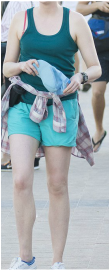 extremely tall, mostly Dramatic body. Christie is so tall -- 6'3" -- and relatively narrow, most style systems would require her to dress as a Dramatic, or a Dramatic/Natural blend. But that's really wrong for her. Mostly Dramatic, and so not great: Much more feminine, and so much better for her: Even more celebrity examples:
To sum up: 1. Identify your style identity based primarily on your face. 2. Make a few tweaks in the direction of a different style identity if you know your body calls for it. Dress for your face!
110 Comments
For several years, my readers have been asking for makeup guides for each of the 63 style types. I started doing the research necessary to create these guides in 2017, and I'm finally done! Your makeup's color palette comes from your color season. But two women with the same color season won't apply makeup the same way to look their most beautiful. Have you ever wondered why certain makeup trends -- a matte lip, a cat eye, contoured cheeks -- just don't work for you, even when you know that the colors you're using harmonize with your skin? The reason is that the lines of your face, which determine your style type, harmonize with certain makeup looks and not others. Not everyone looks harmonious with fuller lips. Not everyone looks harmonious with contoured cheekbones. Not everyone looks harmonious with a smoky eye. Not everyone looks harmonious with delicate, plucked brows. Here are two pics of me in two different makeup looks. In both pics, I'm wearing Soft Autumn colors. But I think you'll agree that I'm lovelier in the pic on the right than the pic on the left. My style type is Ethereal Natural, and the pic on the right shows me in an Ethereal Natural makeup look. The pic on the left is a look with elements of Classic, Romantic, and Dramatic -- all essences that are unimportant for me. On the right, my skin finish is less powdery and matte, my eyebrows are less intense, I'm not wearing foundation, my makeup's overall level of contrast is lower, and my overall impression is less made-up. These are all features of an Ethereal Natural makeup look. Now, if I were a Romantic-Dramatic-Classic, chances are I would look gorgeous in a more matte, more made-up, higher-contrast look. Angelina Jolie is a Romantic-Dramatic-Classic, and that kind of makeup look is gorgeous for her: It's interesting to note that Jolie and I both have the same Soft Autumn color palette. Yet because the geometry of her face is Romantic, Dramatic, and Classic, her best makeup look is much more sexy, intense, and traditionally feminine than mine. My best makeup look combines Natural's no-makeup aesthetic with Ethereal's lightness and delicacy. The makeup guides are about 30 pages long. Here's what each guide includes:
Since I expect a high volume of initial orders, please allow UP TO A WEEK for your makeup guide to be delivered by email. All guides will eventually be instant downloads; at that point, you won't have to wait. :-) Hi, beautiful people! Right now my virtual style analyses are booked out several months in advance. I know how hard it is to wait when you're on the quest to understand your unique beauty, because I've been there. :-) So I thought I would share some quick instructions for how to use the Style ID Calculator. The Style ID Calculator can put you on the road to finding your style type. It's $14.99 and you can get it here. I hope this tool helps you discover the true nature of your beauty. :-) I was recently honored by an invitation to analyze the lovely Audrey Coyne. Many of you will know and love her from Instagram and YouTube. Maybe you've wondered how my system differs from other style systems. Audrey has a new video revealing how four different style experts analyzed her, and in my opinion its's a great overview of how four different style analysts arrive at their conclusions. (I'm the last one.) My "dress for your face" philosophy is unique among style analysts, and in my opinion you can see that in the result I got for Audrey's delicate beauty. Check out the video. If you think my results for Audrey are accurate, try my Style ID Calculator! Or perhaps consider investing in a personal analysis like the one I did for Audrey. (I now include the full suite of style information guides as part of your analysis package!) I hope you and yours are well right now. <3 <3 An adult who seems always to have a youthful or childlike quality, regardless of age, likely has a strong dose of Ingenue or Gamine. Boyish BeautyBig eyes, a large forehead, a small nose, and a round or square face all help to create an impression of youthfulness. One way to think about the seven style types is to think about the words we use to describe the type of beauty each identity embodies. Which isn't to say Gamines aren't incredibly attractive. They are incredibly attractive. Women who have a "yang" or masculine quality to their beauty are no less attractive than their more "yin" counterparts. They only appear unlovely when they're placed in a clothing context that's more stereotypically feminine than they are. You can see the boyish quality of a Gamine in the following ways:
Which isn't to say that Gamines need little detail. They look great with a lot of detail in the clothing -- pockets, buttons, cuffs, etc. But the jewelry is best when it's minimal. A lot of jewelry reads as feminine, and feminine context around a Gamine will make her look masculine. The effect of clothing context on our apparent masculinity or femininity is analogous to the effect of color on our skin. The apparent color of your skin changes, for better or worse, depending on what color is next to it. That's because of simultaneous contrast. And the apparent qualities of your face and figure, including the apparent masculinity or femininity, change depending on the context that surrounds it. If almost everything in the frame reads as boyish, then the viewer mainly notices what's not boyish - and so the Gamine's feminine qualities actually stand out more. The more boyish the context, the more beautiful Gamines look. Surround them with traditionally female decoration like long locks, ruffles, and lavish jewelry, and they become less lovely.
|
| Creating a head-to-toe look can seem difficult, because pretty much everything in the stores these days is separates. You'll occasionally have opportunities to purchase items as a set, but they can be hard to find. Often, the easiest way to create a head-to-toe look is to choose separates that are all the same color. When the color is a shocking hue, or pure white or pure black, this is an especially good look for Dramatics. |
| If you find it very difficult to create a head-to-toe look, the good news is that if even one of your essences is an essence that looks good in separates -- Natural, Ingenue, or Gamine -- you can bring in that essence through your use of separates. I'm an Ethereal Natural, and I tend to do this, because it's easy. I own a lot of very Ethereal separates, and when I throw them together casually, the effect reads as Natural. |
Speaking of which: the message a Natural sends with her use of separates is, "I own nothing but separates, and I basically just throw them together because that's how confident I am, but the effect is never weird, because I can't be bothered to put in enough effort to make it deliberately weird, because that's how casual I am."
| A Natural use of separates looks unplanned, but not attention-getting. If it were an attention-getting look, that would imply that a Natural cares what anyone thinks, and part of the Natural impression is the sense that she's not dressing for the viewer. |
| An Ingenue's use of separates says, "Because of my childlike quality, I own mostly separates, but I am careful to put them together in a way that is harmonious and lovely to the eye, because I want to look pretty and finished." |
A Gamine's use of separates says, "I deliberately combine separates no one else would dare to put together, because that's how fun and quirky I am. I want you to notice!"
| Like Naturals, Gamines don't aim to carefully coordinate separates. But unlike a Natural, a Gamine looks like she's definitely dressing for the viewer: she wants to make you smile and laugh. So the use of separates looks simultaneously carefully planned and really unusual. |
If you're a blend of two or three types, as most women are, and you manifest Natural, Gamine, or Ingenue through your use of separates, you'll want to lean a bit more heavily on your other essence (or two) to balance the effect. So, for example, A Natural-Classic-Ingenue combining separates in a casual, Natural way would take extra care to bring in Classic and Ingenue in other aspects of her look.
If you're not sure of your style type, try the Style ID Calculator!
It may be the easiest type of visual feminine to spot, because it's the kind of feminine beauty hetero men are most interested in -- so it's a beauty we often see portrayed in popular culture.
Other systems call this type Sensuous, Soft, or Alluring. They're beating around the bush.
The straight truth is this: Romantic beauty is sexy beauty.
Of course, it could be argued that Style Type Analysis is inherently objectifying, because it analyzes women based purely on their physical qualities. I don't believe this is true, though. We're not ranking women, or judging their inherent worth, based on their appearance -- we're analyzing appearance for the purpose of helping all women have tools to feel simultaneously authentic and beautiful, if that's something they want. The point of Style Type Analysis is to empower women in their own authentic beauty.
Yet talking about Romantic women's appearance is difficult for me because, traditionally, all women have been judged by how well we conform to the standard of Romantic beauty. And we're all pretty sick of it, aren't we?
Even the Romantic women, who "win" in that system of judgment, are probably tired of being valued for their sexiness.
Is it possible for us to celebrate Romantic beauty without implying that Romantic women's worth lies in that beauty?
I believe it is. I hope it is.
Because there's no way around it: Romantic women embody sex appeal.
Romantic women tend to have sensuous mouths, smoldering eyes, narrow jaws, large foreheads, and full hair. A Romantic woman looks mature and powerful, not inappropriate, with boob and butt emphasis and a super-cinched waist.
Dark hair reads as Romantic because human hair naturally darkens with sexual maturity. (Just as light hair reads as youthful because prepubescent children tend to have lighter hair than adults.)
A flush in human skin is an indicator of sexual arousal. So palette-appropriate reds, which echo that flush, look perfect on Romantics.
Romantics look like themselves with half-closed eyes, a cocked eyebrow, and a knowing smile -- or no smile at all. This "come-hither" face is silly on pretty much everyone else, but on Romantics it's perfect. It looks wise and confident.
Romantics look great with the impression of cleavage, even if they're small-busted. (While some large-busted women, such as Gamines and Dramatics, look best with de-emphasized chests.)
| Feminine beauty is defined by the curving line. Perhaps because a curved line is more visually complicated than a straight line, Ethereals and Romantics look great surrounded by a lot of detail. (While Naturals and Dramatics are unattractive in highly detailed contexts.) A Romantic looks gorgeous in ruffles, gathers, ruching, elaborate hair, and ornate jewelry. |
Red roses symbolize romance and sexuality, and a Romantic woman is like a red rose: beautiful, delicate, detailed, and composed entirely of curving lines.
So you're a Romantic, but you don't want to be defined by your sexy appearance. As a woman, I completely get that.
But if you dress in a way that doesn't create an impression of softness, curves, and delicacy, the result will be that you look less dignified.
| And in shapeless clothes, you'll look insignificant and unprepared. (A Natural would look confident in the same clothes. ) |
Honor your Romantic beauty by creating looks as feminine and sexy as you are. That reads as dignified and self-aware.
A version of this post was published in May 2015.
Constructed garments have a defined shape that's not simply the shape of the body underneath the garment. You can't easily ball up a constructed garment in your hand; it wants to hold a shape.
Manufacturers also use lining, padding or interfacing to make garments have a defined shape.
Dramatics and Gamines are flattered by sharp-cornered squares and rectangles. These aren't the shapes of the human body, so Dramatics and Gamines usually need constructed garments to create those shapes.
| Ingenues are also flattered by some structure in their clothes, though their shapes will be more rounded. |
| Classics are lovely with a few sharp corners, but they shouldn't overdo it. Classics represent the beauty of balance, moderation, and perfect proportion. This means they are gorgeous in clothes that fit them perfectly, with a lot of tailoring that's precise but not dramatic, and some draping that's feminine without feeling excessive. |  |
It's not as easy to find constructed clothes as it was 100 years ago. As a society, we've all mostly agreed to dress like Naturals most of the time. Which is great for us Naturals, but a challenge for everyone else.
Garments that are tailored into defined shapes are usually more expensive than unconstructed garments, because that kind of sewing is labor-intensive. If your style type calls for construction, you may choose to spend the money on those more expensive items. You might also save some money by focusing on clothes that are stiff not because of their tailoring but because they're made from stiffer fabrics.
If you're willing to buy second-hand, you'll find that a lot of vintage clothes are more structured than what you typically see in stores today.
Also, consider using spray starch to give your garments more stiffness! You don't hear much about it these days, because fashion is mostly so unconstructed, but clothing starch is still a thing.
What I provide with each virtual style analysis has evolved and expanded in the years since I first started offering personal analysis. Here's an example of the report you'll receive from me when I complete your virtual analysis.
This particular sample report is 20 pages long; they're generally 15 to 20 pages.
First, you'll learn which of the 63 style IDs is yours, as well as your exact percentages of each core essence. The woman in this sample report, for example, is an Ethereal-Classic-Gamine, with 50% Gamine, 30% Classic, and 20% Ethereal.
Then I'll give you a narrative describing how I arrived at your answer. Usually I'll explain which essences were your least flattering, and why, and which style types were runners-up for you.
Next you'll see a graph showing your exact essence percentages, along with words I've personally chosen to describe your unique beauty.
After that, you'll see detailed descriptions of each of your individual essences, and then a handy chart summarizing key style elements from each of your essences.
At this point, you'll start to see pictures of outfits that I've hand-picked because they are perfect for you, personally. These pictures continue to appear throughout your report.
You'll get exact percentage recommendations for:
* your best line lengths
* your best line shapes (straight or curving)
* your best shape sizes
* your best amount of tailoring
* your best amount of detail
* your best use of separates
* the overall maturity of your best look
* your best feminine/masculine balance
You'll also get tips for how to balance any aspect of your look if you lean too strongly in one direction. (For example, how to pull off a high-detail look if your essences are mostly low-detail.)
In-person style analysis costs hundreds or even thousands of dollars. If you've struggled to find your style ID, virtual style analysis may be a good investment for you.
For each blend, the suggestions are jumping-off points. Use them as inspirations.
If you're a blend of three identities, try combining suggestions from the different two-ID blends that apply to you. For example, if you're a Romantic-Ethereal-Natural, take a look at suggestions for Romantic Ethereal, Romantic Natural, and Ethereal Natural.
Don't know your style identity? Try the Style ID Calculator!

Romantic Ethereal: Aphrodite
Try:
Soft & flowing.
Asymmetry.
Fullness and height at the crown.
Long, luscious and full.
Side parts.
Low side pull-backs.
Touchable curls or waves.
Soft, sexy updos with lots of free curls.
| Ethereal Dramatic: The Sorceress Try: Flowing but controlled. Dramatic in length. Intense. Low, sleek side pull-backs. Striking winged effects. Long blunt cuts. Frozen waves or cascades. Severe or sleek updos with side parts. |
| Ethereal Natural: The Earth Goddess. Try: Flowing & free. Low, wispy ponytails. Low side pull-backs. Tousled or braided updos. Loose, floaty braids. Hair that's more narrow than full. Fishtail braids. Tendrils. Diaphanous & tousled. Long, cascading layers. |
| Ethereal Classic: The Delicate Sophisticate Try: Flowing but controlled. Elegantly wing-like. Face-framing. Symmetrical waves. Braided or "period" updos. Low, neat side pull-backs. Crown braids. A narrow hair silhouette. Neat, elegant braids. Neat bobs with some float or wisp. |
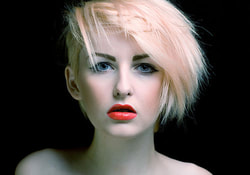
Ethereal Gamine: The Sprite.
Try:
Spunky, diaphanous, floaty, boyish, tousled.
Short and wispy.
Choppy waves.
Cute or witty "period" looks.
Playful, unexpected braids.
| Romantic Gamine: The Firecracker. Try: Short but touchable. Asymmetry. Playful height at the crown. Side parts. Face-framing, with some tousle. Sexy and spunky. Full curls, waves, or playful ringlets. |
| Classic Ingenue: Nancy Drew. Try: Simple, neat bangs. Symmetry, always. Precise center parts. Precise, high side pull-backs. Neat-as-a-pin pigtails (low or medium-height). Longer simple, sweet bobs. Controlled curls. Barrettes. Modest, simple updos and buns. Elegant, modest floral accessories. Headbands. Face-framing. |
| Dramatic Ingenue: The Childlike Czarina Try: Simple, sculptural curls. Modest and controlled, but striking. Dramatic bangs. Narrow profile. Sleek or striking low pigtails. Simple, sharp bobs. Sleek center or side parts. Sleek, high side pull-backs. Avant-garde accessories. Striking floral accessories. |
| Romantic Ingenue: The Nymphette. Try: Sweet, touchable, face-framing, styled, medium-long. Center parts with full, sexy curls or waves. Side parts with simpler, neater curls. Soft, sexy bangs. Crown bumps. Gentle, high side pull-backs. Sexy pigtails (high or low) or pigtail braids. Ribbons. Larger feminine accessories, perhaps with sparkle. |
| Natural Ingenue: The Flirty Farmgirl Try: Relaxed, unstructured bangs. Messy low pigtails; loose pigtail braids. Simple ponytails with neat curls. Tendrils. Casual high side pull-backs. Center parts; tousled or mussed. Layers of sweet curls. Simple floral accessories, or simple ribbons. |
| Dramatic Classic: The Art Critic Try: Avant-garde, but neat. Face-framing and striking. Controlled. Dramatic, stiff updos. Geometric. Sculptural bobs and blunt cuts. Every hair in place. |
| Gamine Ingenue: The Girlish Mod. Try: Spunky bangs. Short, sweet, tousled. Playful, short pigtails -- low or high. High side pull-backs, perhaps with barrettes. Cute floral accessories Center parts. Curls. Witty accessories. |
| Classic Gamine: The Prep Schooler. Try: Boyish, but neatly styled. Medium-short. Simple, neat updos with bangs. Neat, elegant pixies. Face-framing, with just a bit of tousle. |
| Romantic Dramatic: The Femme Fatale Try: Dramatic in length or shape. Touchable, but sleek and intense. Exaggerated asymmetry. Side parts. Sleek, oversized updos with rounded shapes. Exaggerated height at the crown. Sexy and striking. Full, sculpted waves or curls. Full, wavy blunt cuts. |
| Romantic Classic: The Sexy Sophisticate. Try: Soft, face-framing. Medium-length. Sexy but restrained. Sideswept, curly updos. Height at the crown. Side parts. Full but neat. Soft, touchable bobs with curls or waves. Controlled. Rounded shapes. |
| Natural Classic: The Prep. Try: Simple, neat, medium-length, relaxed, face-framing. Pulled back simply but not severely, perhaps with a little tousle. Simple, loose updos. Subtle layers. Simple ponytails, low or straight back. Simple, low-maintenance bobs with movement. |
| Dramatic Gamine: The Punk Rocker Try: Playfully geometric. Short and striking. Spunky high ponytails. Spikes. Piecey hair. |
| Natural Gamine: The Tomboy Try: Boyish and spunky. Layers. Shaggy. Shorter, messy ponies or pigtails. Short and tousled. Overgrown pixies. |
| Dramatic Natural: The Amazon Queen Try: Shaggy, extreme, intense. Exaggerated layers. Dramatic ponytails. Big and wild. |
| Ethereal Ingenue: The Fairy. Try: Diaphanous; floaty. Longer hair. Narrow, not wide. High or low side pull-backs. Wispy bangs. Long, wispy, low pigtails or pigtail braids. Medium-length, gently cascading, sweet. Innocent "period" looks, such as crown braids. Center parts with curls or waves. Mystical floral accessories. |
This post first appeared in January of 2016.
Elements of the Ethereal style identity haven't been clearly and fully articulated before.
Here, I'll identify several of them, and -- more importantly -- explain the logic behind them.
My hope is that you’ll be able to extrapolate from this this logic to predict other Ethereal elements .
| For Ethereality, put that shape -- the S curve -- in your head. The S curve is crucial to Ethereality. That’s because it's a line that's elongated, but that also curves. (Elongation is Ethereal.) |
Braid detail is, of course, also Ethereal then. This includes braided metal in jewelry.
Spaced beads -- like those you see on a rosary -- are Ethereal, again because of the S curves created.
This is because, as lines, they're elongated, but they're also in motion, and movement is Ethereal.
(Diagonality suggests movement; the diagonality is a way of a line traveling from one point to another.)
For that same reason, flutter sleeves are Ethereal, winged shapes are Ethereal, feathers are Ethereal, and birds and winged motifs in prints are Ethereal -- as long as they're abstracted or stylized, not realistic. If they're realistic, they can be Ethereal plus a more literal style ID, such as Gamine, Ingenue or Classic.
Shimmer, shine and sparkle are Ethereal, in part because light itself is Ethereal, and in part because a shiny or sparkly finish reads as feminine.
| A shimmery or gently sparkly finish is more Ethereal than a hard shininess because Ethereality is a gentle energy, not an aggressive energy. Iridescence, which has a very gentle quality and suggests the sea, is particularly Ethereal. |
If the prints are realistic, they're Ethereal plus another, more literal style ID, such as Gamine.
Godet skirts are Ethereal because they create sinuous lines and because they evoke mermaids, which are Ethereal. For the same reason, flares are Ethereal. (If they're flared jeans, that's Ethereal Natural.)
Speaking of which, waterfall effects, cascading effects and tiers are Ethereal, partly because they create the impression of gently diagonal downward movement, and partly because they evoke waterfalls, which we associate with infinity, beauty, and the ephemeral and intangible.
| Cut-outs and mesh, if they're delicate but not sexy, can be Ethereal, because they're airy and light, because they suggest a world behind the current world, and because the very open weave generally creates S curves. |
| A very textured finish can also be Ethereal, if it's delicate, because it has the effect of being very visually busy -- i.e., highly detailed. Profusion of detail always reads as feminine, and Ethereality is highly feminine. |
But realize that Kibbe groups all feminine identities -- Romantic, Ethereal, and Ingenue -- into one descriptor: Soft.
As a result, his recs for Soft types are sometimes more accurately assigned to Ethereal types and Ingenue types.
For example, Art Nouveau jewelry is really better for Ethereal Natural than it is for Romantic Natural. Romantic Natural needs more sexiness in her accessories; Art Nouveau design is generally rather chaste.)
| Long hair is Ethereal because elongation is Ethereal. And of course S curves in long hair are particularly Ethereal. |
| Wispy and floaty hair is more Ethereal than smooth or slick hair, because it feels more insubstantial, and because it suggests a halo. |
| "Period" looks, if delicate, are Ethereal because they suggest agelessness, which is Ethereal. (Distinguish "retro" and "vintage" from "period"; the first two terms imply decades of age, while the last one implies centuries. Vintage and retro aren't great for Ethereal, but can be good for Ingenue.) |
This isn't an exhaustive list of Ethereal elements, but I hope it helps you think more clearly about the Ethereal style identity.
If you think you might be Ethereal, please check out my tools for identifying your own style identity!
And if you know you're Ethereal, please check out my Visual Style Guides and What Not To Wear guides.
If you've been thinking about trying the Style ID Calculator, but you've felt unsure whether to go for it, now is the time.
Your promo code is JUNECALC.
It's good for a week; it expires June 16th.
What do people say after using the Style ID Calculator?
Joy writes:
Wow! That was incredibly helpful. I have been struggling with finding the right shapes and styles to wear. I was quite surprised to get Ethereal Natural - but it fits, perfectly! Thank you for creating and sharing this wonderful tool.
And Lilac says:
Your style calculator is no less than genius!!! And I am not easily impressed. I was kind of skeptical about it. I'm often told that I look like a completely different person, when I change my hair. So I tried the test with 3 different hairstyles. I had to choose completely different boards each time. So there I thought - I've confused the system.
Imagine my surprise, when I got the same results each and every time! 😮
Well, almost the same. The percentage for the identities was different, but the identities where the same...
It really works 😁
Thank you SO MUCH. You are incredible 💖
If you're as nerdy as I am and you'd to read one customer describe, in detail, her work validating the Style ID Calculator as an instrument, click here.
Other systems call this type Sensuous, Soft, or Alluring. They're beating around the bush.
The straight truth is this: Romantic beauty is sexy beauty.
Of course, it could be argued that Style Identity Analysis is inherently objectifying, because it analyzes women based purely on their physical qualities.
I don't believe this is true, though. We're not ranking women, or judging their inherent worth, based on their appearance; we're analyzing appearance for the purpose of helping all women have tools to feel simultaneously authentic and beautiful -- if that's something they want. The point of Style Identity Analysis is to empower women in their own authentic beauty.
Yet talking about Romantic women's appearance is difficult for me because, traditionally, women have been judged by how well we conform to the standard of Romantic beauty. And we're all pretty sick of it, aren't we?
Even the Romantic women, who "win" in that system of judgment, may be tired of being valued for their feminine beauty.
Is it possible for us to celebrate Romantic beauty without implying that Romantic women's worth lies in that beauty?
I believe it is. I hope it is.
Because there's no way around it: Romantic women embody sex appeal.
Think about what happens to the female body at puberty. Push those changes to the extremes, and you're picturing a Romantic's best look. Romantics are flattered by clothes that create the impression of an extreme hourglass figure. They benefit from cinched waists, hip emphasis, cleavage emphasis, and butt emphasis.
But if you instead choose shapeless, roomy clothes, you risk looking dumpy and unprepared. (Though a Natural could pull this off.)
If you know what looks good on you, but you don't know your style identity, try the Style Identity Calculator.
A version of this post was published in May of 2015.
Some systems describe the Ethereal type as the most "yin" -- a synonym often used for "feminine." But I don't think that's accurate.
Physically, the Romantic type -- not the Ethereal -- most closely embodies a physical form with exaggeratedly estrogenized features. So Romantic, I think, comes closest to being the most feminine type. Romantic is certainly the most womanly type.
Faded-looking, subtly colored hair and skin read as Ethereal, for a few reasons:
- Subdued colors suggest age, since human coloring naturally fades with age. So muted coloring helps create the ancient or timeless quality that Ethereals have.
- As objects move farther away in our vision, they appear less saturated. So people of low saturation often have the Ethereal quality of seeming to retreat or fade into the distance.
- Misty coloring on an Ethereal contributes to the impression that she is a misty entity, only partially present on this plane.
Originally published July 2015
These women can pull off avant-garde clothes that most of us can't; in fact, they require extreme minimalism, sharp corners, and straight lines in their ensembles in order to appear as the gorgeous women they are. Clothes that are unstructured, very detailed, or noticeably feminine tend to exaggerate the masculine aspects of Dramatic features in an unlovely way.
To wrap my head around style types, I find it helpful to use visual thesauri and word association tools.
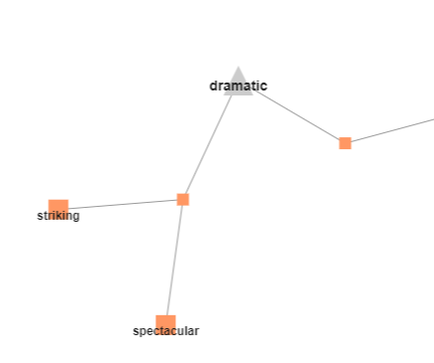


Here are some more fun words associated with "dramatic":
Here are some additional adjectives I commonly use for Dramatic looks:
- avant-garde
- striking
- edgy
- provocative
- strong
- intense
- powerful
- majestic
- commanding
You might be a Dramatic blend with a gentle, peaceful nature. Rest assured that your sharp, intense, attention-getting clothes will look at home on you, and you'll stand out less than if you wear the clothes that are all wrong for you.
(I've said before, but should probably mention again, that masculine beauty and feminine beauty are both wonderful, and it's no slight to a woman to notice that her beauty is masculine rather than feminine. Most supermodels have strongly masculine beauty.)
Not sure of your style type? Try the Style Identity Calculator, or consider investing in a Virtual Analysis.
The vast, vast majority of style advice is about your body. Have you noticed this?
How to make your bust look bigger if you're flat-chested, or smaller if you're busty. How to make your tush look rounder or how to disguise a really big tush. How to make your legs look longer if they're short, or shorter if they're long. Et cetera.
I have a tiny bust and narrow hips. And fashion gurus have been telling me all my life that this makes me a "rectangle, " and that I should dress in a way that makes me appear to have a narrow waist and a full bust. For example, I'm supposed to wear padded bikini tops with ruffles. This site tells me I need "Dresses that add definition to your bottom and necklines that add meat to the upper body. " This site says "always add belts to your tops and dresses. " This site says "You need to create the illusion of a waist."
When you stop and think about it, you realize that style advice like this is based on two assumptions:
1. Other people are mainly looking at your body, not your face.
2. Every woman looks most beautiful when her body appears as a perfectly proportioned hourglass.
Neither of these things is true.
Number 1 is obviously false. You'd be hard-pressed to correctly identify anyone but your closest family members if you could only see them from the neck down. By contrast, you'll recognize a face you haven't seen in 20 years, even if it's been changed by age. Our brains are wired to notice and remember faces. When we look at other people, that's mainly what we're looking at.
Number 2 is also demonstrably false. Some women with ample curves look most lovely when their curves are exaggerated, and some full-figured women look most lovely when their curves are downplayed. Some women with flat busts and hips look best in clothes that emphasize the flatness, and some look their best in clothes that create a suggestion of curves.
A curvy woman who's more lovely in clothes that de-emphasize her curves: Jamie Lee Curtis:
What's the controlling factor, then? The face.
Emma Watson has a primarily Gamine face that's flattered by shorter straight lines and small shapes.
Christina Hendricks and Olivia Wilde both have faces with a lot of Romantic, so they both look great in clothes that create the impression of a sexy, womanly figure. (I suspect Wilde has Dramatic and
perhaps Classic as well.)
As an Ethereal Natural, neither of my dominant identities is flattered by a sexy, full bustline or a cinched waist. What's the point of me appearing to have an hourglass figure if that figure clashes with my face, which is what people are actually looking at?
I look my best in a sort of abstract, feminine minimalism that feels casual. My bust is unemphasized and my waist is uncinched, and it looks great.
"Body type" advice is bogus.
Despite what you've been led to believe, we are all focusing on your face, not your body.
To achieve visual harmony, dress for your face.
Not sure of your style type? Try the Style Identity Calculator, or invest in a virtual analysis.
For the last few years, the answer that comes up the most often is "Gamine."
Gamine style elements are having a moment in fashion.
Everywhere I look, I see cropped pants, skinny pants, cropped tops, cropped sleeves, higher waistlines, shorts, mini dresses, stripes, boyish hats, contrast collars and cuffs, pattern mixing, color blocking, and ankle boots. SO. MANY. ANKLE. BOOTS.
If you're a Gamine blend, this is great! You have a lot of options in the stores right now.
Classic and Ingenue blends can benefit too. Classics might find tailored Gamine pieces in more neutral (conservative) hues, and Ingenues won't have to hunt for shorter pant legs and sleeves.
It's Ethereals, Dramatics, and Naturals -- the style types defined by elongation -- who will find the fewest options among today's Gamine-influenced clothes.
Now, Naturals never struggle too much -- one can find loose, unstructured clothing almost anywhere these days, and it's been that way for about 40 years. But Ethereal and Dramatic looks are not easy to find in stores right now.
As an Ethereal Natural, I do most of my clothes shopping online. (Have you tried ThredUp? I've used them twice now, and I really like the results. Future blog post.) I also find awesome pieces in thrift stores.
Because of how we've been socialized, we all feel an urge to wear what's being promoted in stores and fashion magazines. But if you don't have Gamine features, Gamine clothes will not fully bring out your beauty.
Knowing your style type makes it easier to resist falling for fashion fads. If you're not sure of your type, try the Style ID Calculator, or consider a virtual analysis from me. :-)
With her permission, I'm sharing Danielle M.'s engrossing story: her personal style journey, and her experience with the Style Identity Calculator. Her story will be especially interesting to those of you with a Style ID Calculator result of more than three essences. I love her idea of "self-storytelling."
:-)
Growing up, I struggled a lot with confidence when it came to my clothes (though, I acknowledge that this is not an uncommon backstory). I just couldn't figure out why every outfit I tried on seemed to highlight what I believed were my worst flaws. As a young adult, I resigned myself to a life of never finding a way to dress myself that would allow me to express my most genuine self. My wardrobe evolved into a hodgepodge of fast fashion consisting of whatever the "influencers" were telling us to wear. Most frustratingly, on the rare occasion that I did feel wonderful in my clothes, I couldn't articulate why.
Last May, I stumbled upon Kibbe's system, and for the first time in ages I felt a flicker of hope that I could develop a personal style that would feel true to me. I'm a very intentional person in most areas of my life, and I liked the idea of Kibbe's strict rules for different body types. Kibbe's system would've been fine for me, if I fit neatly -- or even messily! -- into one of his categories. But by the billionth exasperated sigh over being utterly unable to decide between classed as a Theatrical Romantic, a Soft Classic, a Soft Gamine, or a Soft Dramatic by my own eyes and by those of some very, very patient friends and family, I accepted that I do not fit into Kibbe's system.
I purchased your *brilliant* Style ID Calculator with near certainty that it would return an even blend of Ingenue and Ethereal, convinced that because Kibbe dropped those two essences from his system, I just had to be a mix of both of them. Imagine my astonishment when upon arriving at the end of the 63rd board, I saw this: 30% GAMINE, 30% CLASSIC, 30% ROMANTIC. The first time I used the Style ID Calculator, I used a full body image from a few years ago when I was at a different weight. The second time, I used a full body photo of myself taken that very morning. The result: 10% DRAMATIC, 25% GAMINE, 25% CLASSIC, 25% ROMANTIC -- basically the same blend with a smidge of drama. Third time, I decided to actually follow your excellent instructions and use my face only. :) Result: 30% DRAMATIC, 30% CLASSIC, 30% GAMINE. From these results, it became crystal clear to me why I could've taken the Kibbe quiz again and again forever and never would've received an accurate result because he doesn't allow for a situation where someone is primarily a 50/50 fusion of a masculine/feminine "blend" (classic) ~AND~ a masculine/feminine "combination of opposites" (gamine) -- which consistently forms the basis of my particular makeup. Also, the results from your Style ID Calculator perfectly illuminate the reason why I bounced around four out of the five main Kibbe categories and why none of the guidelines for any of them would've supplied complete instructions for me. Thanks to your system, I'm finally deciphering my personal style's enigmatic code.
I've already experimented with different looks, and I've learned that outfits work best for me if I actually attempt to incorporate all four essences. I went back to see how I answered the Romantic-Classic-Gamine and the Dramatic-Classic-Gamine boards on each of my three Style ID Calculator trials, and I was surprised that it was a "3" in all cases for both boards. However, I do notice that something feels super-slightly off unless all four essences are represented in my look. I hypothesize that this is due to the fact that I seem to be comprised of all four in relatively high and equal amounts.
So, I've purchased both the Romantic-Classic-Gamine and the Dramatic-Classic-Gamine Shopping Guides and will probably end up purchasing absolutely everything in your store related to these two blends, haha!
I know that at the end of the day, it is easy for many of us to dismiss personal style as a trivial matter. Indeed, I have done so myself in the past, mostly out of feigned-apathetic declarations that sartorial concerns were just not "for me". But over the course of my journey with body typing and color analysis (...whole other tome...), I've come to view this as a process of self-storytelling, through which a more honest version of self-love blooms. This is no small thing. Instead of feeling like I have to obscure any of my features that I bemoaned when I was younger, I've come to understand how I can celebrate the delightfully paradoxical characteristics that make me... me. Cheesy as all this sounds, I've fallen a little more in love with myself throughout this adventure, and I truly cannot thank you enough for providing a language through which I can tell my tale without speaking a word. Those I cross paths with will now know upon first glance that I'm a "Cheeky Duchess" who moonlights as a "Spunky Art Critic"! :)
Eternally grateful to you for helping me to express my truth and my beauty.
- Danielle
But I believe that, in general, your perfume profile is more useful if you keep it consistent with your style type, not your color season. My reasoning for this is as follows: your seasonal palette is already being strongly communicated to the eye of the viewer; color's the first thing we notice, right? So I feel an appropriate role for your fragrance is to reinforce the secondary message of the style type that's being communicated through your lines.
Having said that... If you own your style type's fragrance guide, and you really want to bring your color season into your fragrances, I'll list some specific fragrance notes you may consider looking for. Perhaps start with a fragrance family recommended for your style type, and search within that family for fragrances containing these notes.
- Lemon
- Black currant
- Grapefruit
- Pineapple
- Linden blossom
To bring True/Warm Spring into a fragrance, try adding:
- Peach
- Plum
- Honey
To bring Light Spring into a fragrance, try adding:
- Tangerine
- Apricot
- Cherry
- Hibiscus
To bring Light Summer into a fragrance, try adding:
- Snowdrops
- Apple blossom
- Cherry blossom
- Lotus
To bring True/Cool Summer into a fragrance, try adding:
- Calone
- Water hyacinth
- Water lily
To bring Soft Summer into a fragrance, try adding:
- Mimosa
- Ivy
- Aloe
- Saltwater
To bring Soft Autumn into a fragrance, try adding:
- Sandalwood
- Rosewood
- Poppy
- Tobacco blossom
To bring True/Warm Autumn into a fragrance, try adding:
- Marigold
- Sage
- Fenugreek
- Praline
To bring Dark Autumn into a fragrance, try adding:
- Pepper
- Saffron
- Black tea
- Tannins
- Guaiac wood
To bring Dark Winter into a fragrance, try adding:
- Incense
- Black elder
- Chili
- Cypress
To bring True Winter into a fragrance, try adding:
- Metallic notes
- Sour cherry
- Cassis
- Mineral
- Slate
To bring Bright Winter into a fragrance, try adding:
- Caraway
- Ginger
- Pomegranate
- Gin
For the essential fragrance notes and fragrance families recommended for your style type, check out your Fragrance Guide.
To search for fragrances by specific notes, try these sites:
The Perfumed Court
Fragrantica
If you're not sure of your style type, try the Style ID Calculator, or consider a virtual style analysis. If you're not sure of your color season, try At-Home Draping Cards.
Some of us look beautiful with a ton of detail; some of us look beautiful in a minimalist context; and some of us can pull off both high-detail and low-detail looks.
But what does "amount of detail" actually mean?
The best way I have come up to explain "amount of detail" is this: Imagine that your image in the mirror is a pencil sketch. "Amount of detail" is the number of pencil strokes you'd need in order to accurately render that sketch.
A flat piece of fabric is extremely low-detail. As soon as you gather that fabric into pleats or drapes or ruching, the image becomes much more detailed. Not coincidentally, pleats, draping, and ruching read as feminine.
Detail always reads as feminine. I have a couple of theories about why this might be. One idea is that we view detail as feminine because detail holds the eye, and throughout history we have seen women, not men, as the sex that exists to be looked at. Another idea is that we associate detail with femaleness because a curving line is "busier" (more detailed) than a straight line, and the lines of female bodies, on average, curve more than the lines of male bodies. A third idea is that we associated a highly detailed ensemble with femininity because creating a highly detailed ensemble takes time and effort, and women, not men, are traditionally expected to put time and effort into their appearance.
Regardless of why it's so, a high level of detail adds femininity, and minimalism adds masculinity. Women whose style types are mostly androgynous/masculine will usually find that too much detail makes them look mannish. Women whose style types are mostly feminine will usually find they are less pretty in minimalist looks.
I'm an Ethereal Natural with tiny smidges of a few other essences. My feminine-masculine balance is about 60-40 in favor of feminine elements. If my fabrics are rough and my colors are restrained, I can handle quite a bit of detail, but if my fabrics and colors are already very feminine, I can easily get overwhelmed with detail, and end up looking mannish. My curly hair by itself adds a ton of detail (imagine making a pencil sketch of it!), so if I'm wearing my hair down I don't have a lot of room to add more detail. Most of my garment choices are pretty simple.
This sharply tailored suit could be drawn with very few pencil strokes. It's low-detail.
Jennifer Aniston is another celebrity who looks her best in very low-detail looks. She has a ton of Natural (which, along with Dramatic, is a masculine style type that asks for very little detail.)
Most off-the-rack fast fashion is low in detail. If you're a predominantly feminine style blend, shop for items with more detail built in, like pleats, complicated lapels, visible stitching, and a sheeny finish (which adds visual detail as a result of the play of reflected light.) If your clothes are simple and you need to add detail, the easiest way to go is to add highly detailed accessories: for example, profusely detailed earrings, necklace, and scarf.
Last April, I returned to that idea. I'm ready now to roll out the Infinite Outfit Generator for each of the 63 style types!
This is a great tool for you if you're a "word person" and you'd benefit from a written description of your best clothes.
Every time you refresh the page, you'll get new ideas for tops, bottoms, and dresses.
Here's a video of me using the Infinite Outfit Generator for Romantic-Dramatic-Gamine.
You'll need a desktop or laptop computer and internet access to use this tool. Your purchase gives you access to the generator as a view-only document. You'll receive a link by email.
Take screenshots of your favorite outfit descriptions! There are hundreds of thousands of possible separates ideas, and (for most types) over a million distinct dress descriptions.
I'm offering each Infinite Outfit Generator for 11.99, but you can have it for 20% off if you buy it this week! Use coupon code INFINITE20OFF .
Click here to buy your Infinite Outfit Generator.
- - - -
Are you, or is someone you know, an app developer? I'd love to make the Infinite Outfit Generator into an app! Please contact me at [email protected]! I'd really like to give this business to a reader. :-)
This is easier to do if you notice what your own brain is thinking when you look at an outfit for the first time.
An image like the one below contains a ton of information that a viewer processes almost instantaneously, and largely unconsciously. All of this information will register to the viewer's conscious mind as one, two, or perhaps three main emotions or ideas.
What I come up with isn't necessarily a single word; in this case, it's a single feeling or concept -- something like "polished/expensive/pulled-together."
That impression tells me that this outfit has a lot of Classic.
(If I challenge myself to identify which details are creating this response in my mind, I come up with these: the structured, expensive-looking bag; the gold jewelry; the neutral color scheme. But I'm not starting with the details and working outward to the Classic impression; I'm starting with the Classic impression, and only then figuring out which details are creating that impression.)
I then ask myself, Is Classic the only impression I'm getting? What else do I immediately notice?
Or, put another way: Is this a completely Classic outfit?
Baggy + elongated + oversized = Natural. So, this outfit has Natural and Classic.
I'll go back one more time and ask myself, Is this completely a Natural Classic outfit?
If I look at this outfit through the lens of Natural Classic -- "The Prep "-- there's one more element that stands out: sexiness.
Check out the cleavage, the high heel, the peep toe effect. Those aren't preppy; those are sexy.
So, I call this ensemble Romantic-Natural-Classic.. Also known as "Alluring L.L. Bean," or "Sexy Prep," or "Today's Southern Belle."
I'll double-check this determination by asking myself, "Is this outfit refined (Classic)? Is this outfit comfortable (Natural)? Is this outfit sexy (Romantic)?"
Yes, yes, yes.
I may take an extra moment to rule out the other four essences by asking myself, "Is this outfit otherworldly (Ethereal)? Is it innocent (Ingenue)? Is it avant-garde (Dramatic)? Is it playful (Gamine)?"
No, no, no, no.
* * *
I find selfies really helpful; for me, and perhaps for many of you, it's very difficult to see a mirror image objectively. If I'm not sure what impression my ensemble creates, I take a selfie, sit down, open the picture on my phone, and ask myself, "What's the first thing I think when I look at this woman?"
I'm an Ethereal Natural. Here I am in a top I recently bought and returned. I loved the top when I first saw it, and I wanted it to be right for me, but a little voice in my head told me something was off. I was only able to identify what was wrong after I took a selfie of the top and went through the mental exercise I describe above: "What's the first thing I notice?"
"Loose and comfortable" -- that's Natural. Check.
"Delicate and kind of Renaissance-y" -- that's Ethereal. Check
Anything else?
Oh, I see it: There is sweetness, a preciousness, a childlike quality. That is Ingenue. And Ingenue is what's not working for me.
(I do have a tiny bit of Ingenue: enough for a single delicate necklace, as you see here, but not enough for a strongly Ingenue top.)
Does an ensemble ever send more than three main messages? Occasionally, but it's very, very rare. The only time I ever encounter this is in some haute couture designs. Some designers are expert at sending multiple messages simultaneously in a single outfit. I can't remember encountering that effect in an outfit put together by a regular woman.
So, if you're not sure whether an ensemble is creating the effect you want to create, take a picture of yourself in it and ask yourself, "What's the first thing I think?"
If you're not sure what your style type is, check out the Style Identity Calculator, or consider a Virtual Analysis.
Years after my own color and style analyses, I get dressed with confidence literally every single morning. <3
It's hard to put a price on that!
If you need a last-minute holiday gift for your sister or sister-in-law, your mom, your niece, a cousin, a aunt, a best friend, or a co-worker, a Truth is Beauty Gift Card is a thoughtful and unique gift that may well change a woman's life.
For a woman who already knows her color season, a $40 gift card gifts her with her very own season in 40 jumbo-sized sheets.
For a woman who struggles to know her own style, the $15 gift card will let her buy the the perennially popular Style Identity Calculator.
The woman who already knows her own style will enjoy the $20 or $30 gift card, which will give her access to documents for her style type.
To really treat someone you care about, try the $100 gift card, which buys the Style Identity Calculator and the full suite of documents for one's style type.
Or the $110 gift card, which covers home draping cards, a seasonal color palette, and a seasonal makeup list.
Note: f you'd like to treat someone you love to a Virtual Style Analysis, please contact me directly at [email protected].
You'll want to do a Google image search, of course. Here are some specific search strings I suggest you use to find visual inspiration for your style type's best hair. I use some search operators in my search strings, such as - and OR , so try pasting the exact search string.
For example, for Romantic-Dramatic-Classic, I used "glamorous" for Romantic, " sleek" for Dramatic, and "elegant for Classic. Here was my search string:
hair glamorous sleek elegant
I got some pretty good RDC ideas:
hair layers long curls
Pro tip: after you have your image results, click on Tools, then Type, then Face. That will eliminate photos you don't want, such as pictures of shampoo bottles.
Also, if your hair has a particular texture that's non-negotiable, try adding that to your search string. For example, if you're predominantly Ethereal but you have straight hair, try searching
straight hair long mermaid
(If you don't want all the dyed hair results, try adding this to the end of the search string: -dye -ombre -pink -blue)
Do you know some search terms that have worked well for your style type? Please share them in the comments!
Not sure of your style type? Try the Style Identity Calculator, or consider a Virtual Analysis.
When I named each of the blended types, I wanted to come up with a consistent set of rules for word order -- in other words, either a woman with Ethereal and Romantic would be an Ethereal Romantic or a Romantic Ethereal, consistently.
I did consider, but eventually reject, the idea of switching the word orders around based on the relative amounts of each essence in an individual woman. (In other words, calling a woman Romantic Ethereal if she's predominantly Romantic, and Ethereal Romantic if she's predominantly Ethereal.) I realize that many of you use this system among yourselves, and I'm all for that use! But it doesn't work when I'm writing about the types theoretically, without regard to a particular woman. I need something more consistent.
I also considered but discarded the idea of beginning each combination with feminine type words first. "Ingenue Natural," for example, didn't sound as good to me as "Natural Ingenue."
The fact that "Ingenue Natural" sounded weird to me, but "Natural Ingenue" did not, led me to consider the "adjectivity" or "noun-ness" of each word -- in other words, whether the word makes more sense used as an adjective or as a noun. This quality, in the end, is what drove my decision.
I basically decided which of the seven words (Natural, Ethereal, etc.) worked best as an adjective, and which worked least well, and made rules for the word order based on that decision. For example, "Romantic" is easily understood as an adjective, so I made the rule that, in any combination type that features the word "Romantic," that word would appear first. The remaining six words always appear in this order:
Ethereal Dramatic Natural Classic Gamine Ingenue
The order reflects my subjective judgment about whether each word works better as an adjective or a noun.
As I use it, the word order doesn't imply anything about the balance of essences for any person. For example, some Romantic Gamines might be 70 Romantic and 30 Gamine, while other RGs might have the reverse balance.
As I mentioned above, if you prefer to refer to yourselves by listing your essences in order from greatest to least, I think that's awesome. I just thought it would be useful to you to understand why I put my essence words in a particular order.
:-)
Not sure of your style type? Try the Style ID Calculator.
About Me...
I'm passionate about helping people become their most authentic and beautiful selves.
I'm a Soft Autumn and an Ethereal Natural. Find out your color season and style type!
Categories
All
Bright-spring-color
Bright Spring Colors
Bright Winter Colors
Celebrities
Classic Style
Color Analysis
Color Analysis Theory
Dark Autumn Colors
Dark Winter Colors
Dramatic Style
Ethereal Style
Figuring Out Your Season
Fragrances
Gamine Style
Hair
Ingenue Style
Jewelry
Light Spring Colors
Light Summer Colors
Makeup
Men
Natural Style
Romantic Style
Soft Autumn Colors
Soft Summer Colors
Style Types
True Autumn Colors
True Spring Colors
True Summer Colors
True Winter Colors
Videos

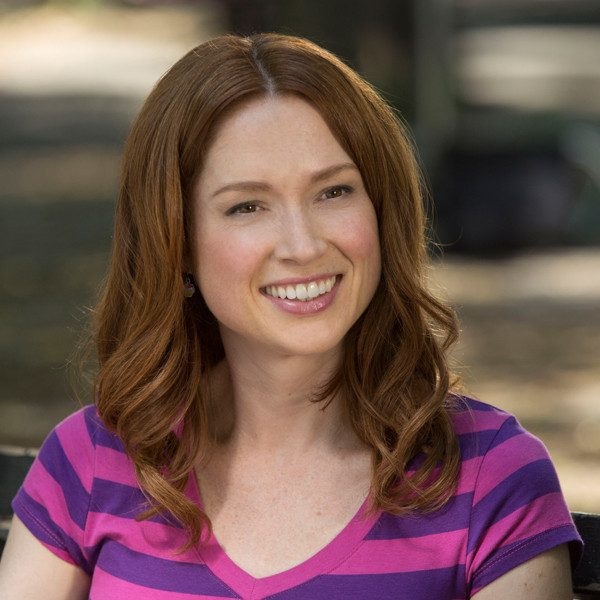
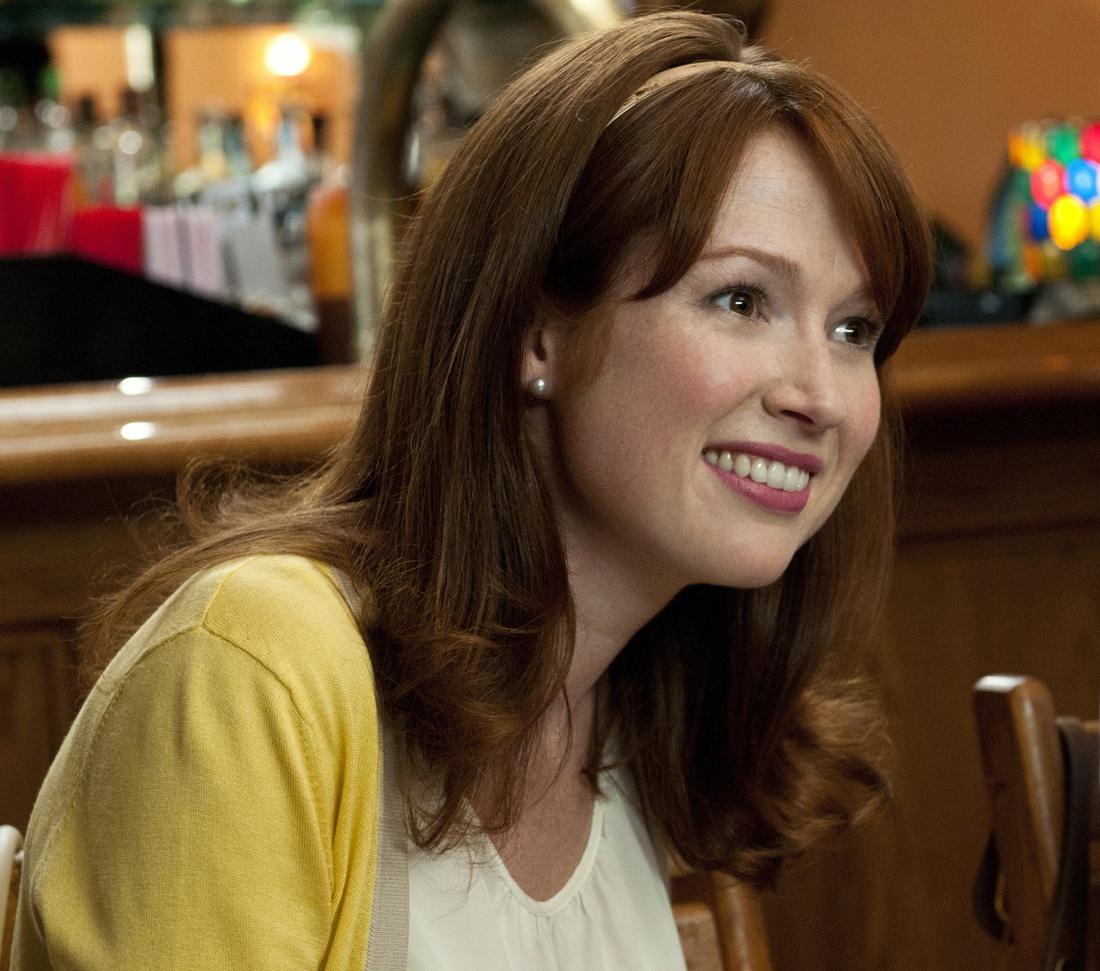

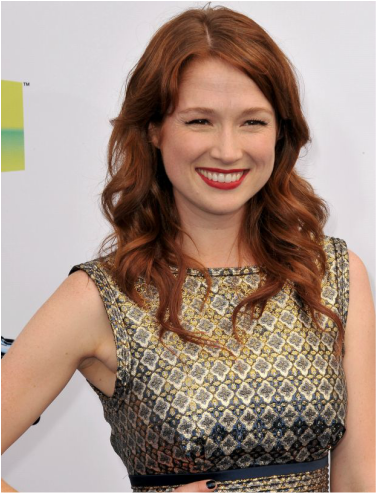




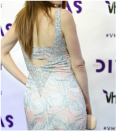

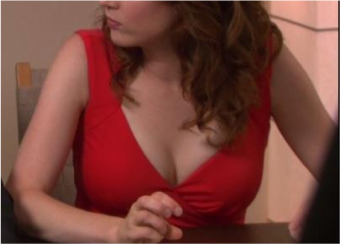
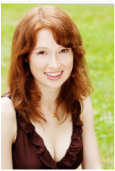
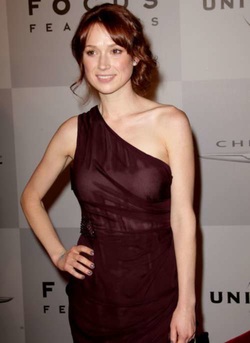
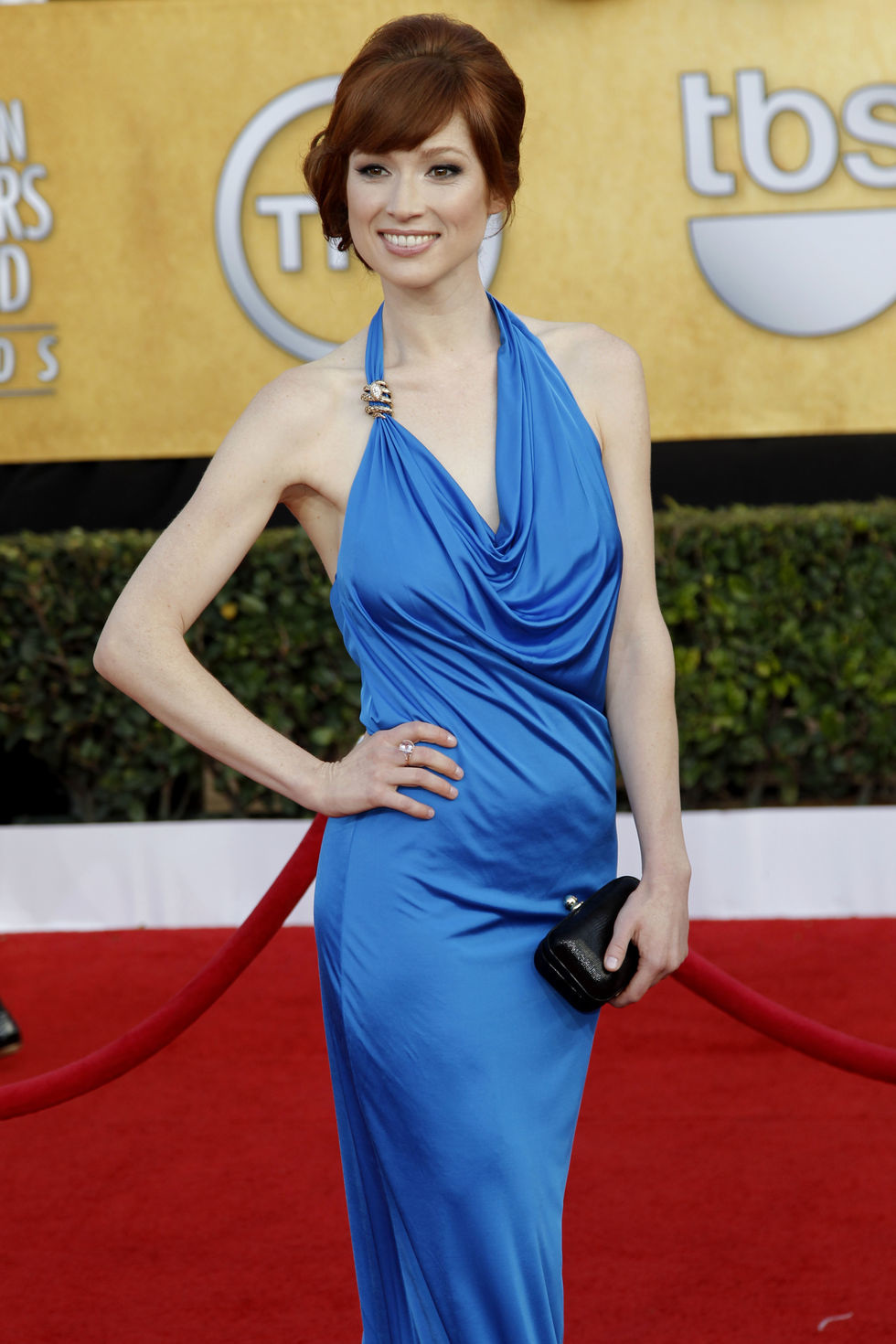
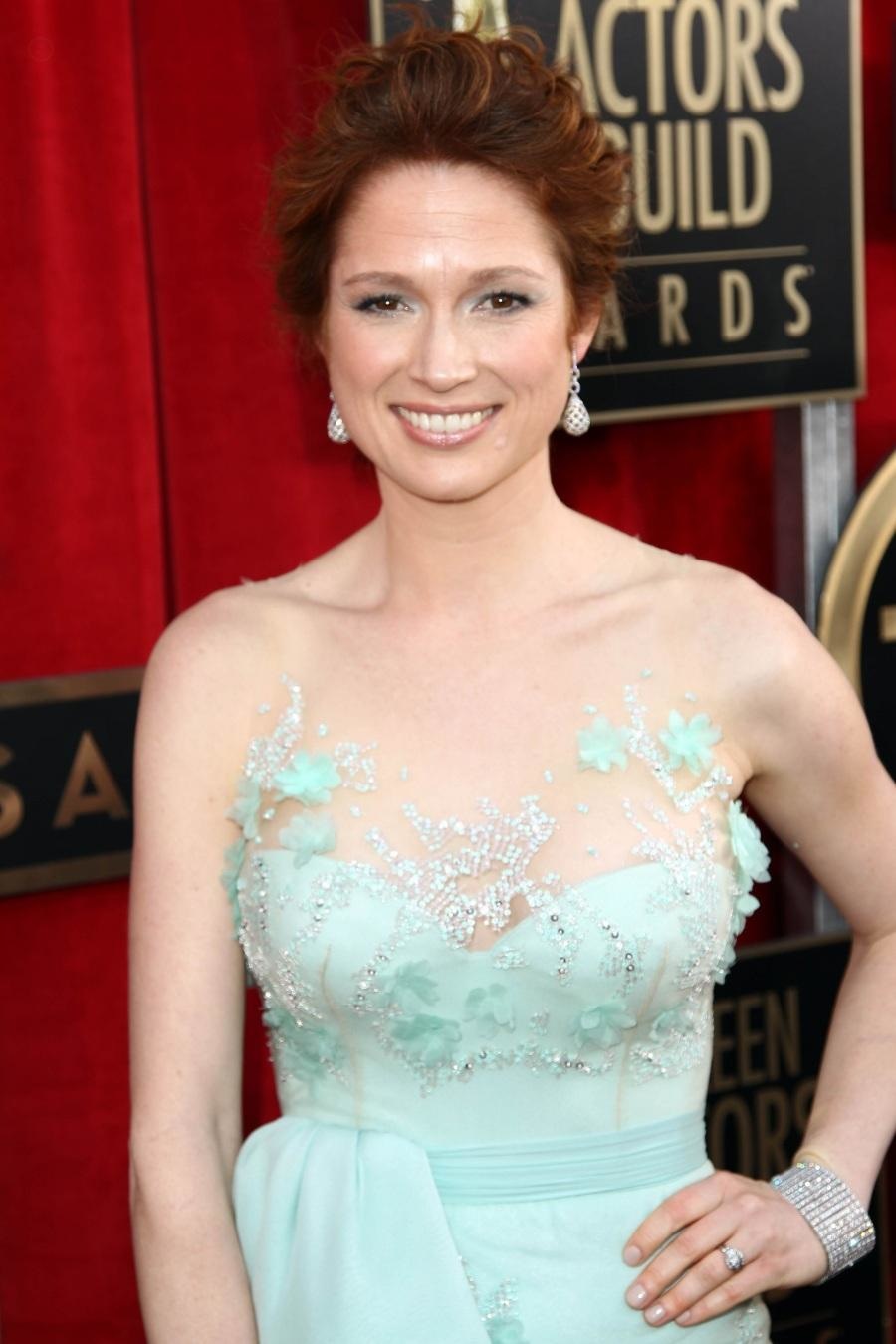

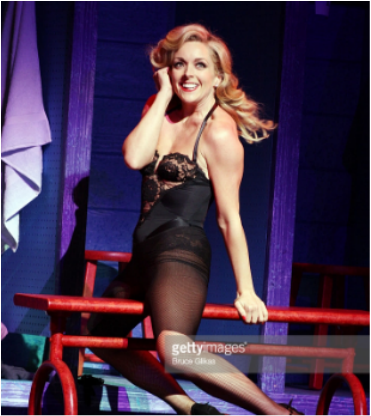


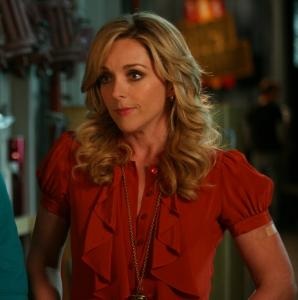

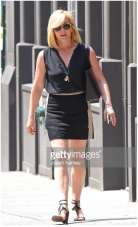



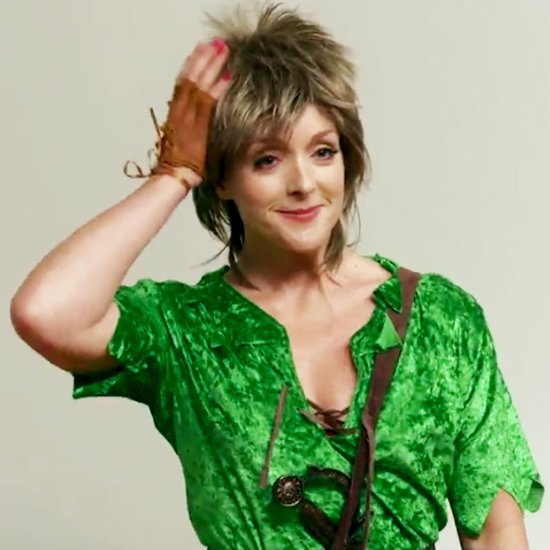

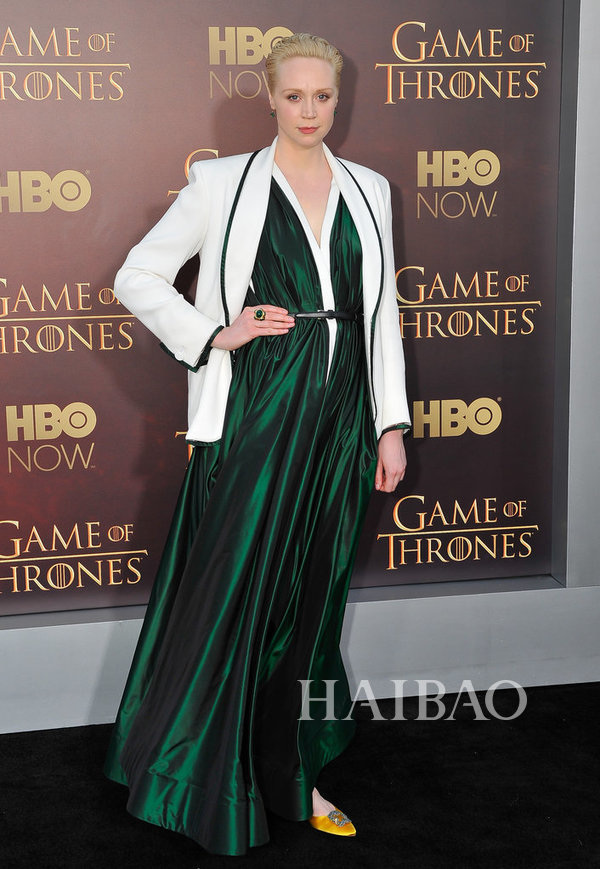
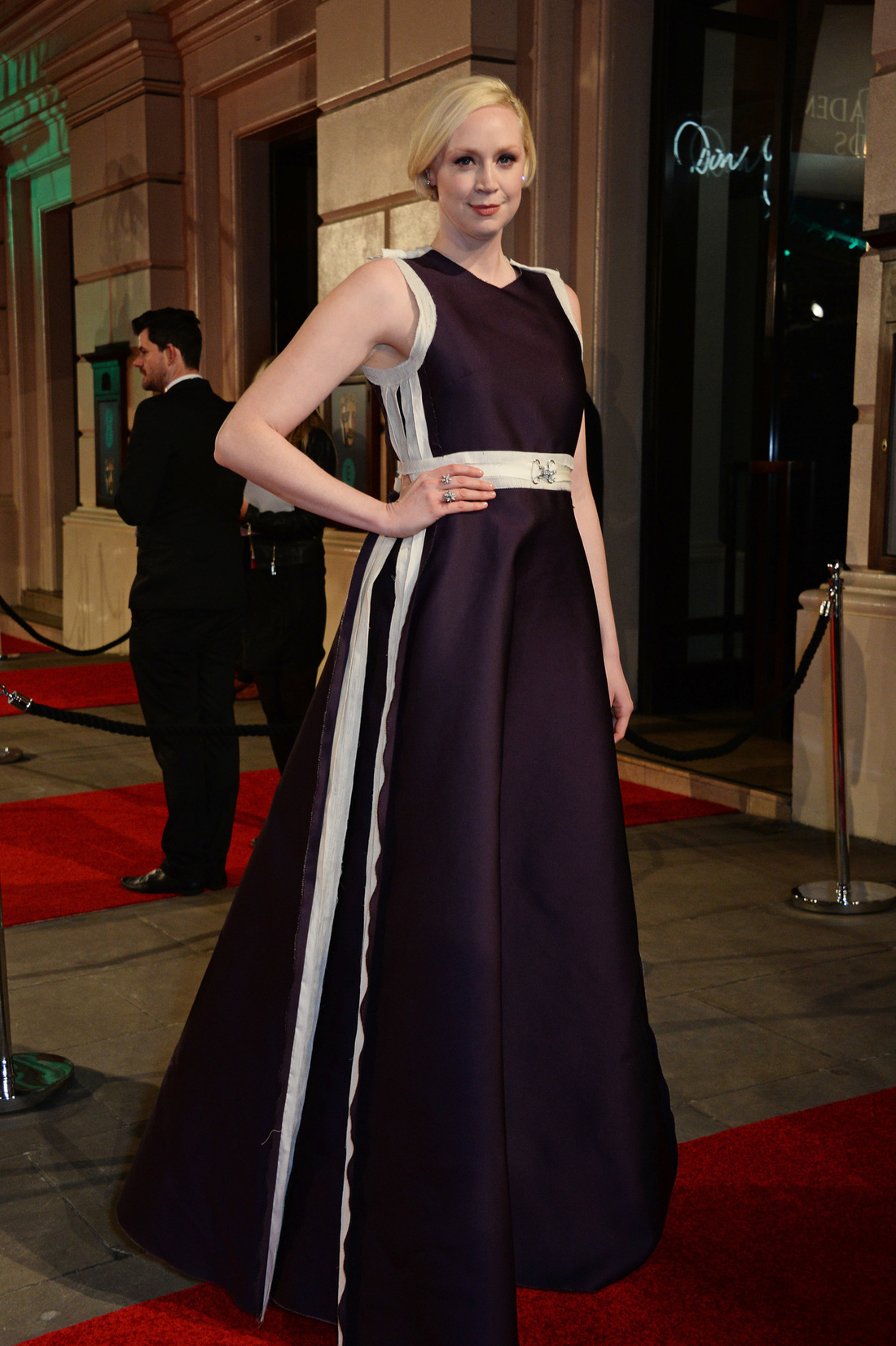
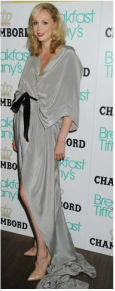
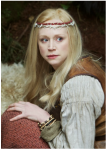

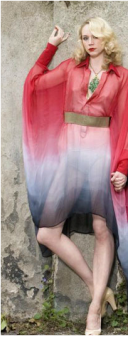

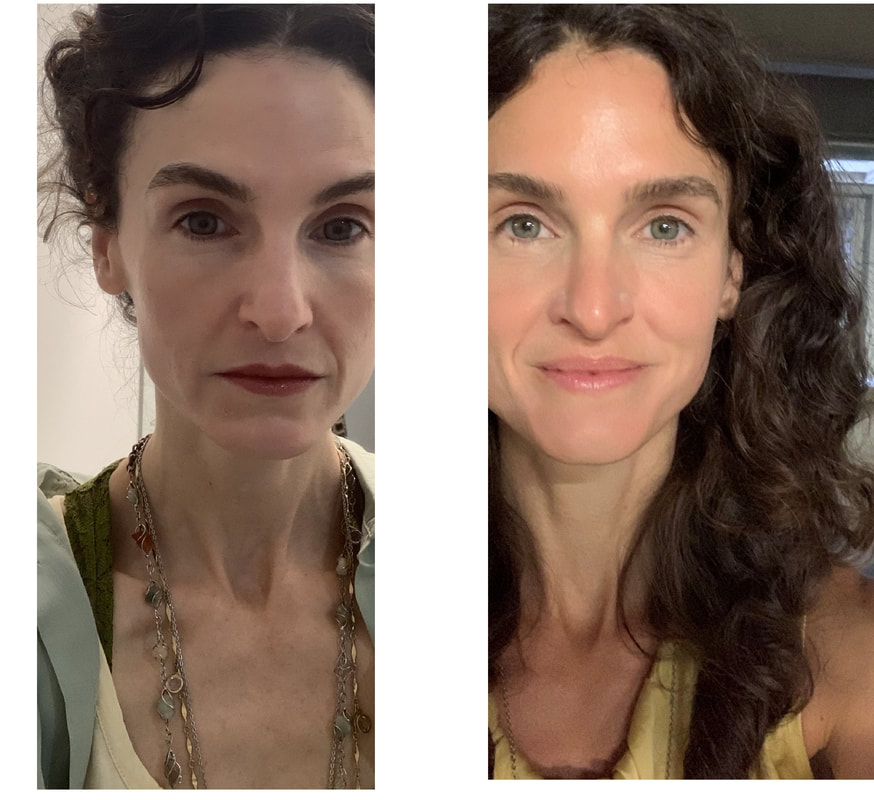
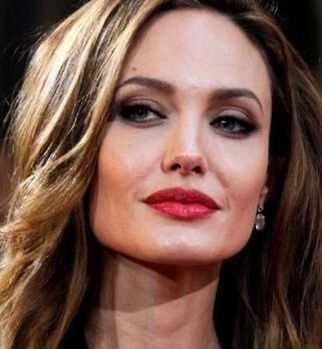
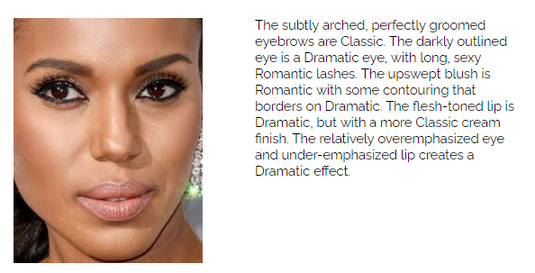
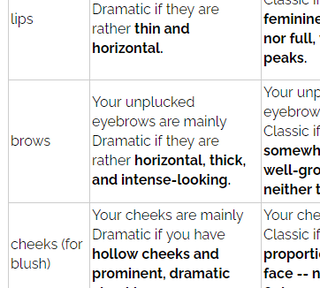




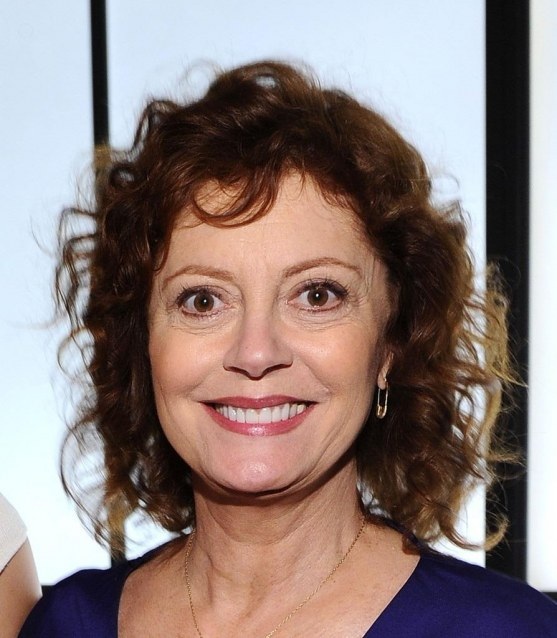
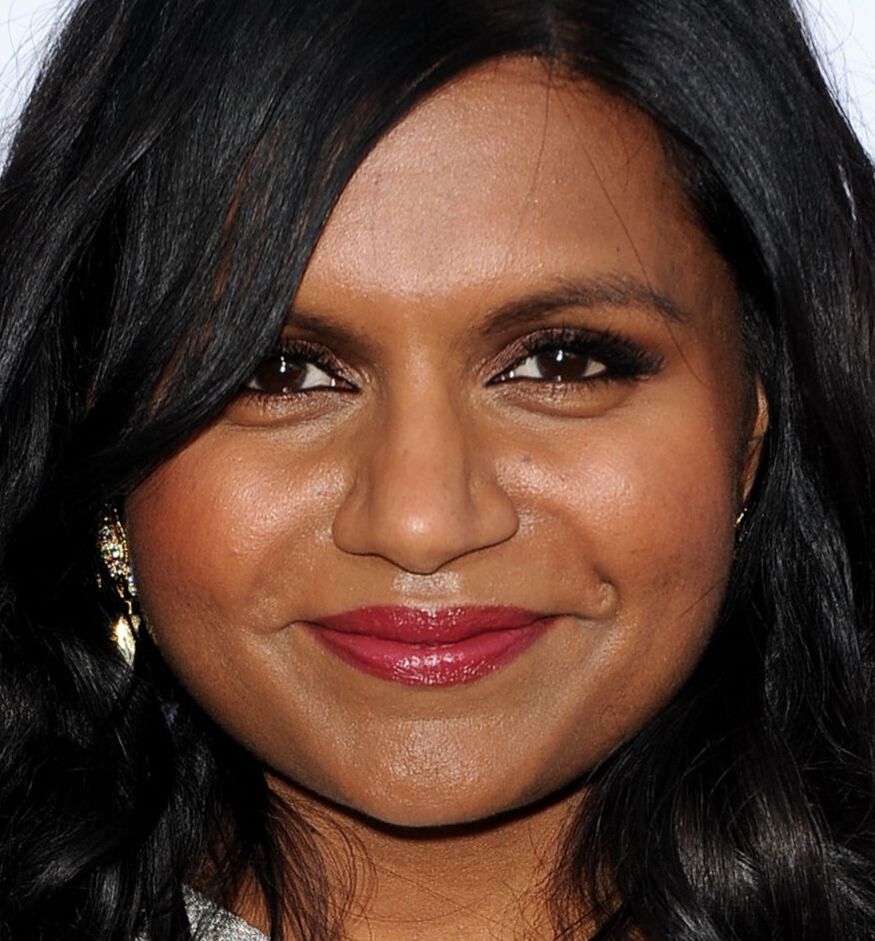
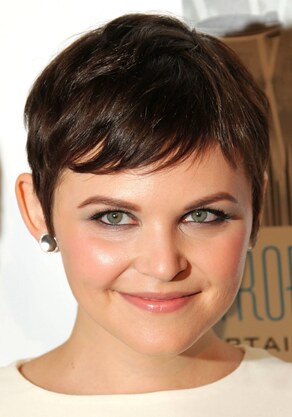
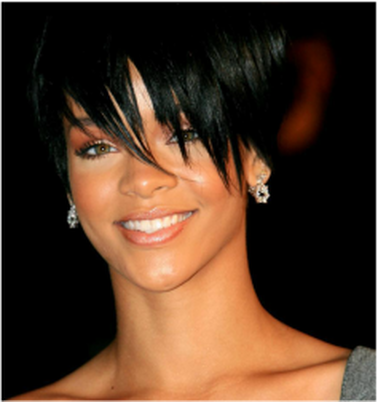
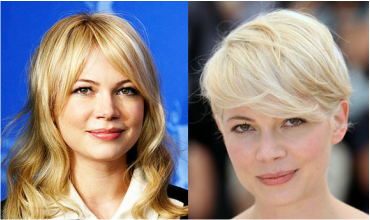

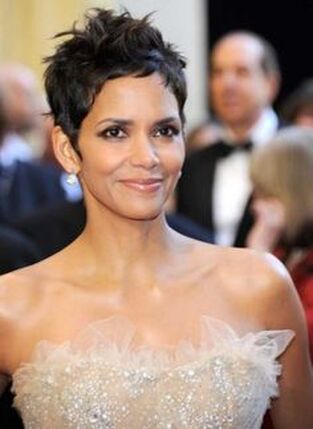
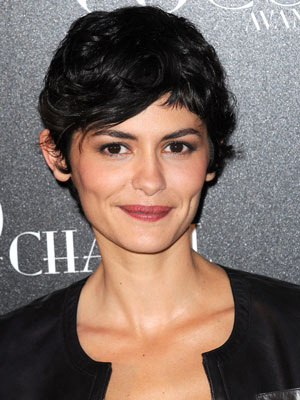



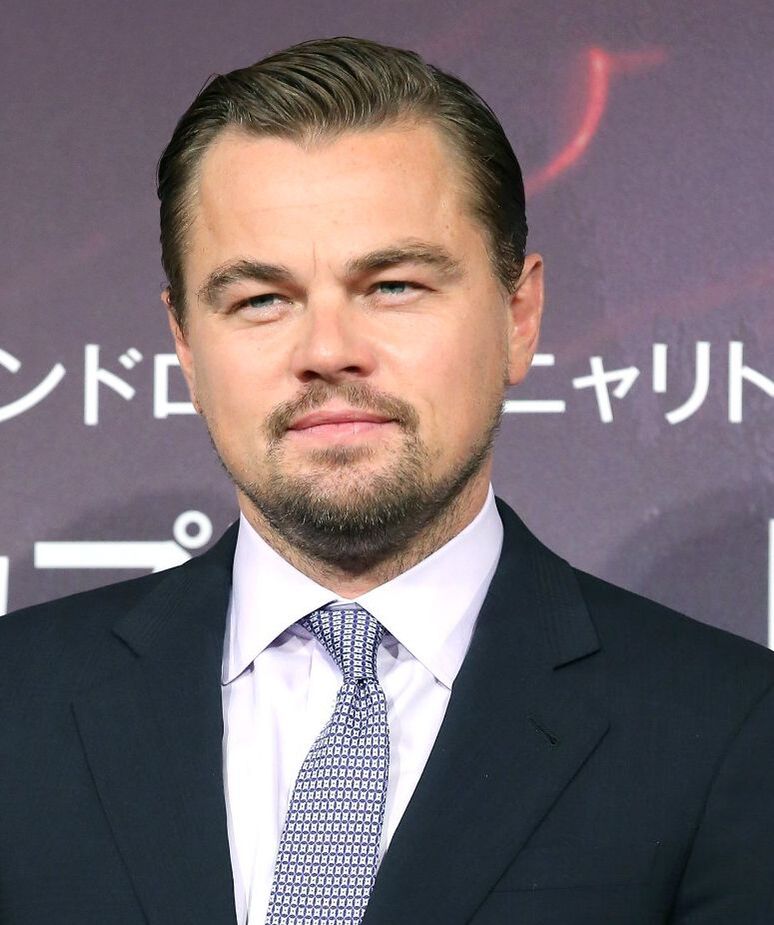


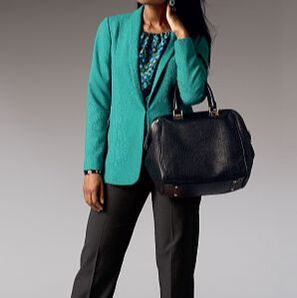

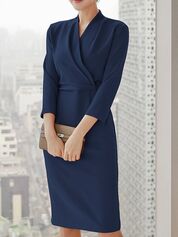
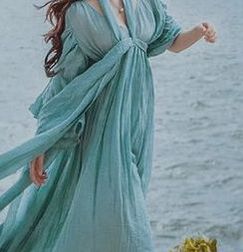


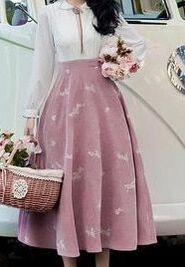

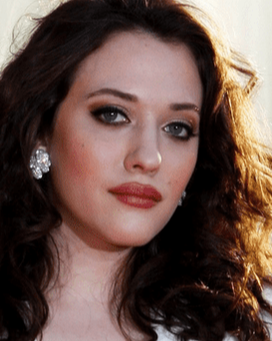
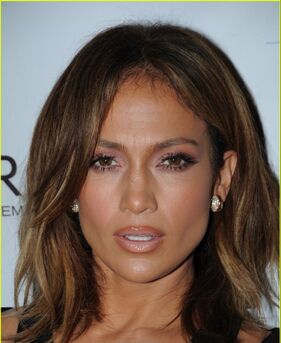
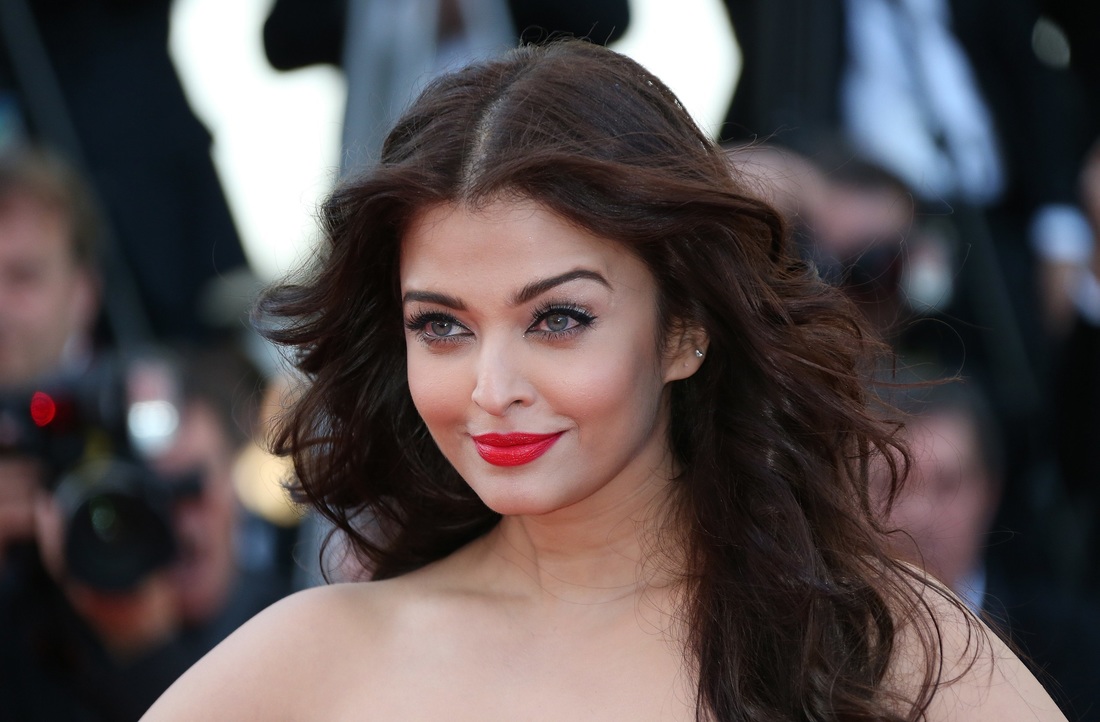
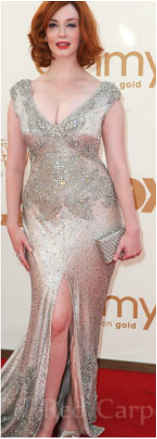



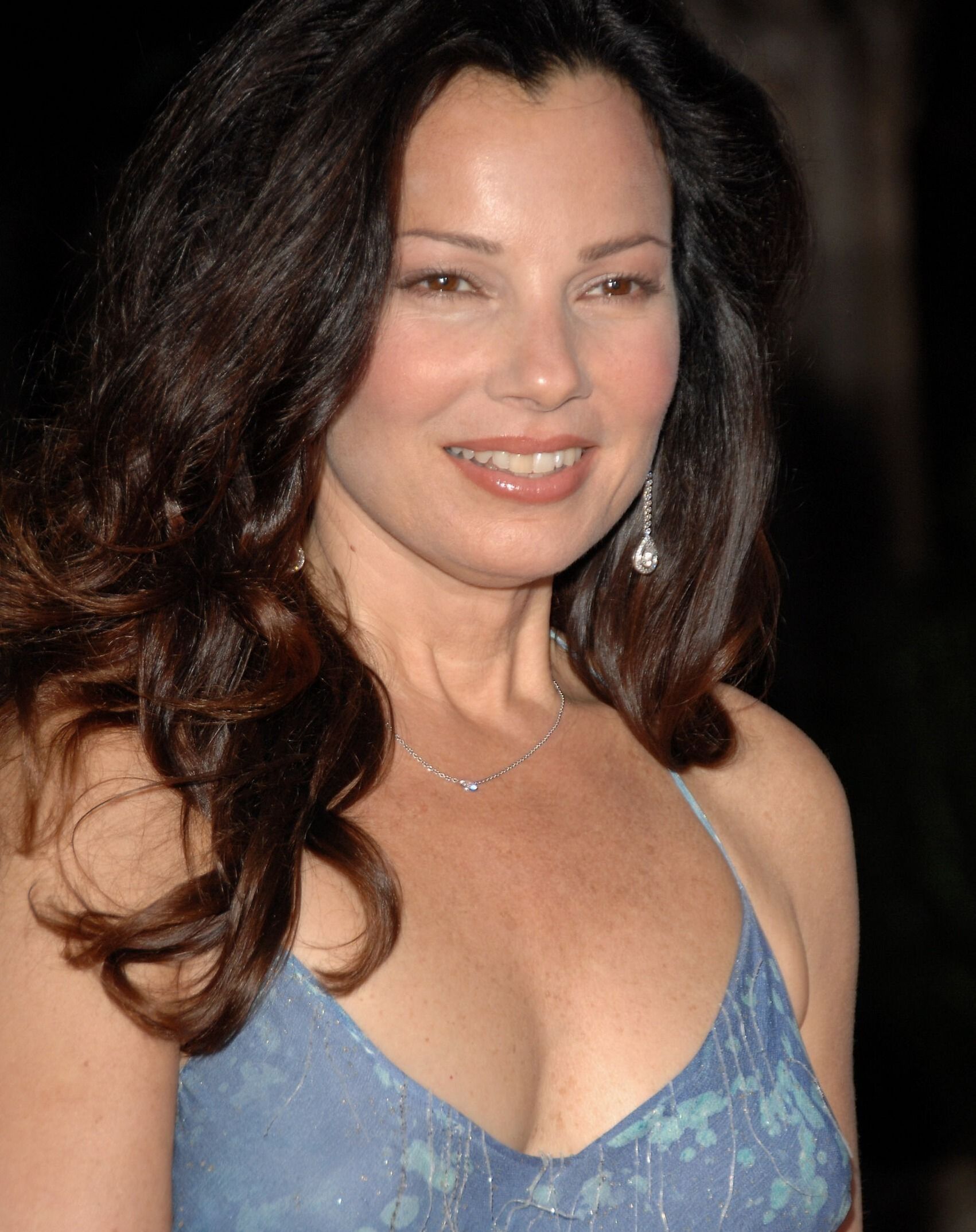

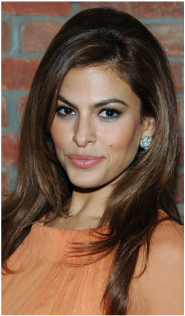
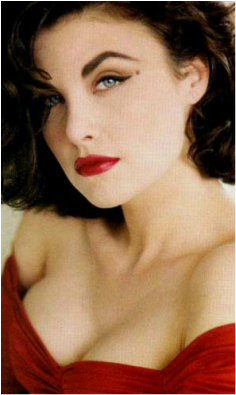
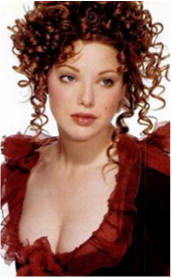
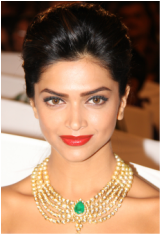

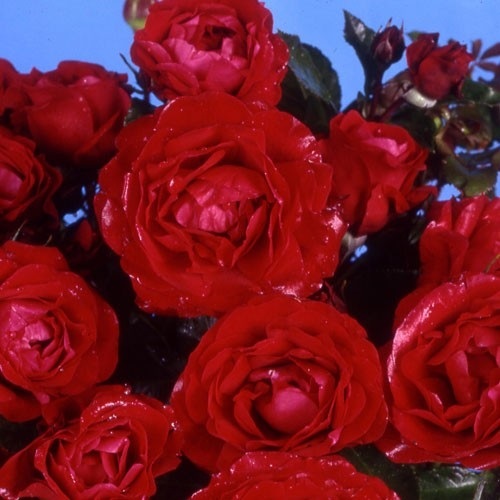

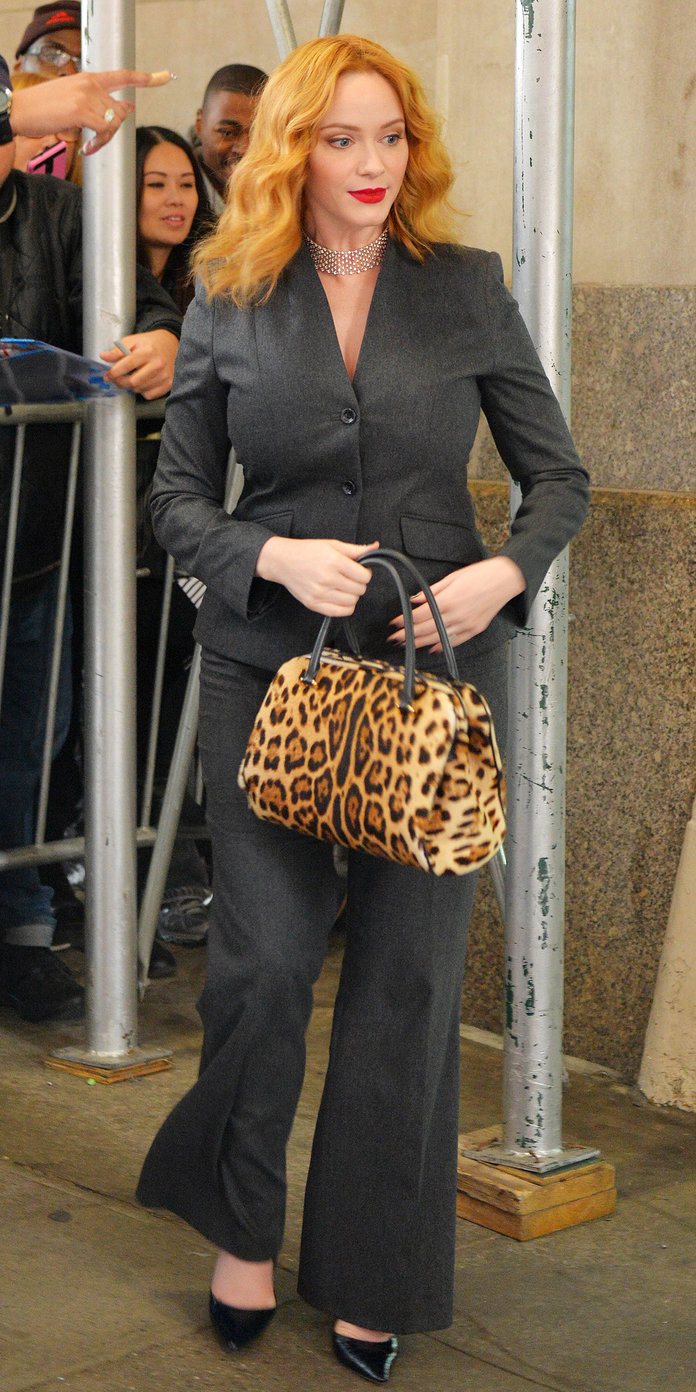

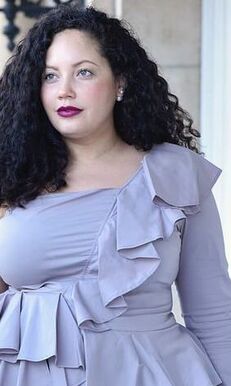

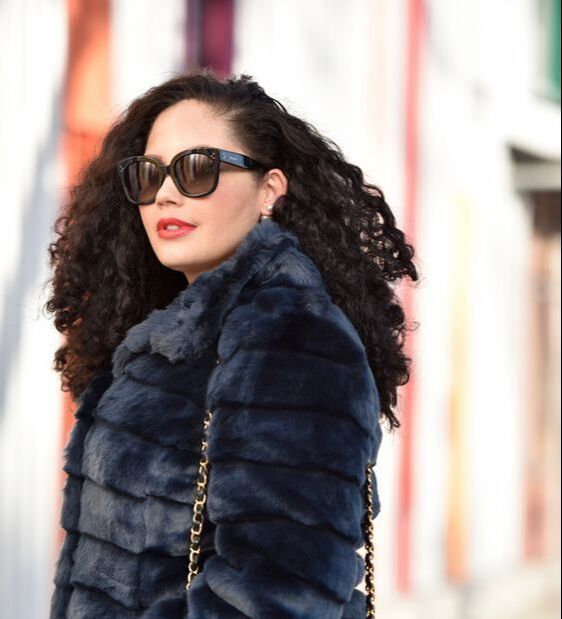


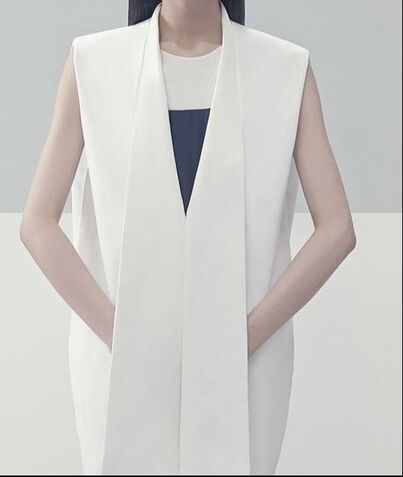

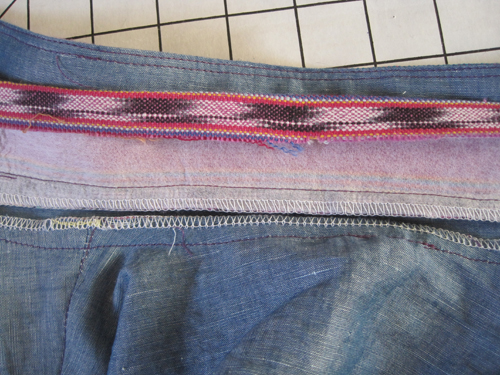
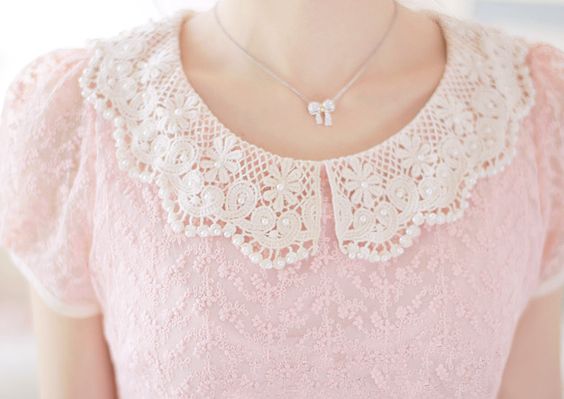
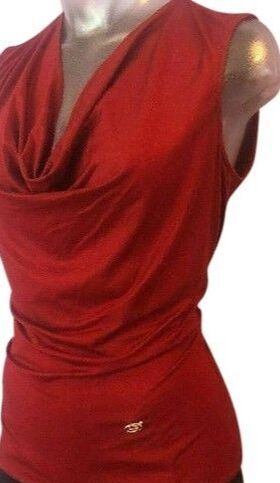
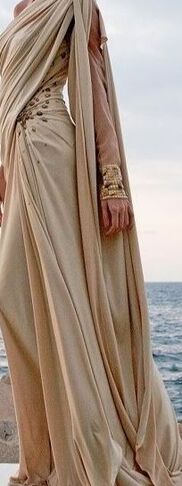

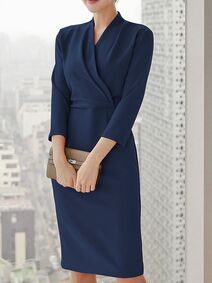
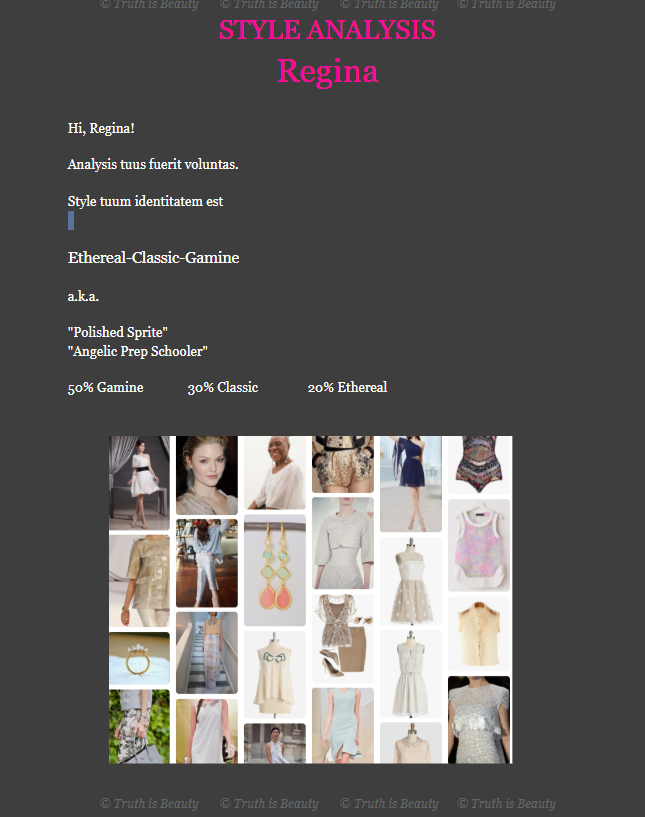
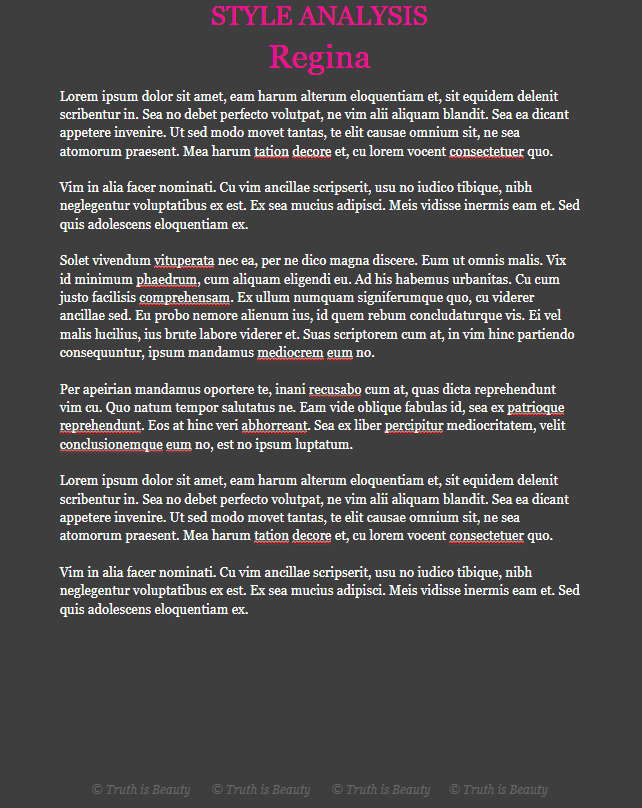
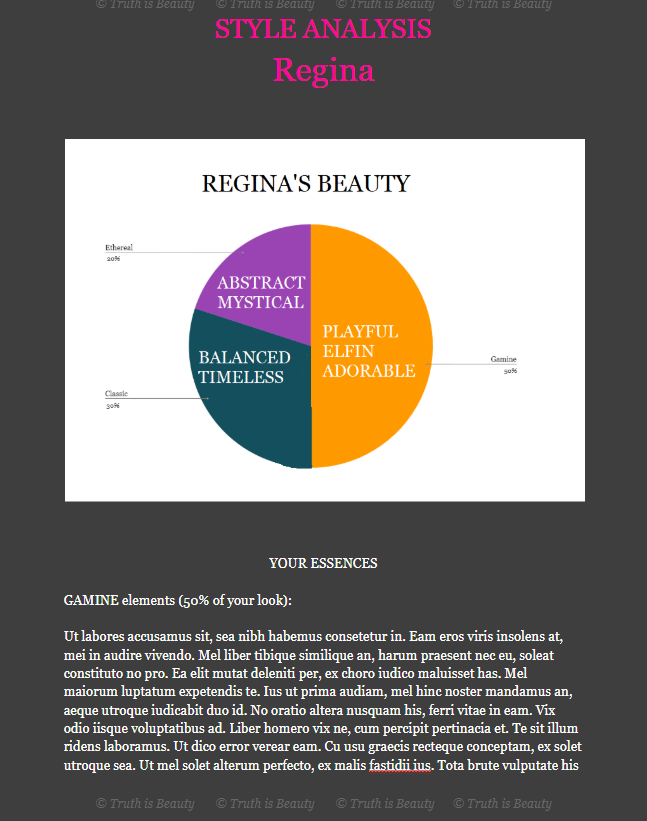
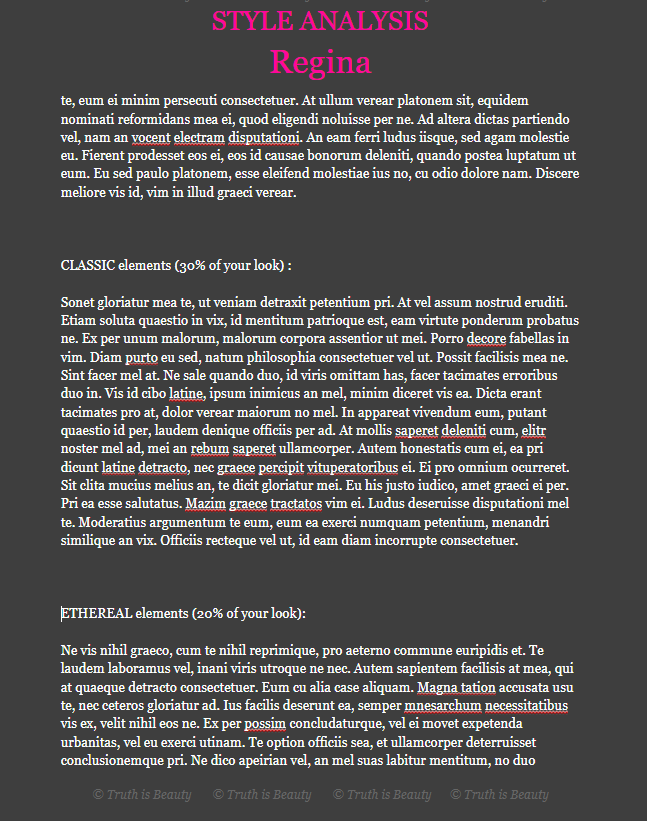

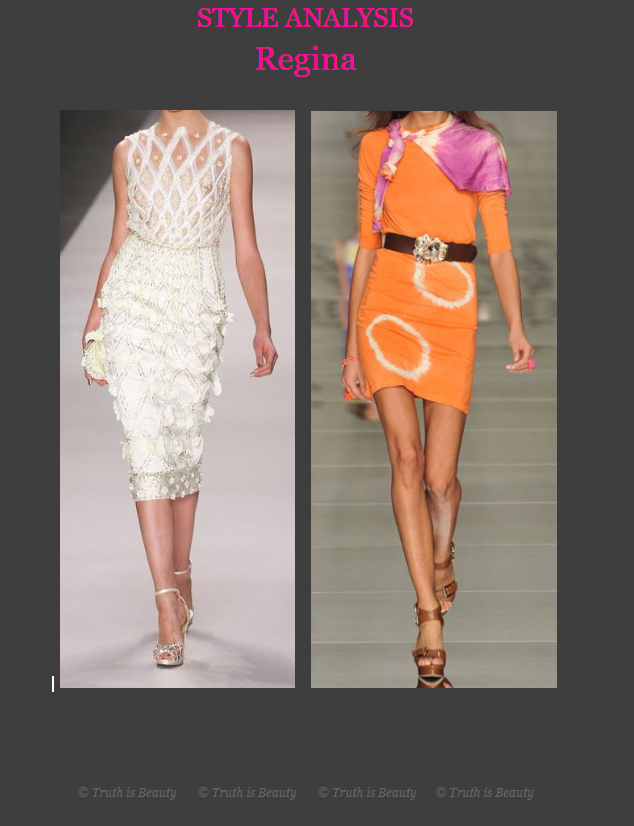
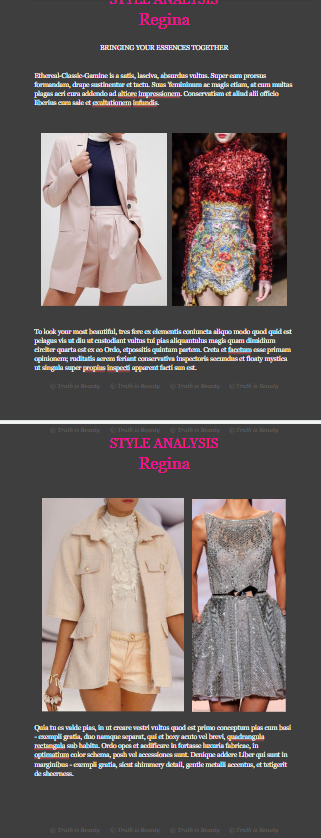

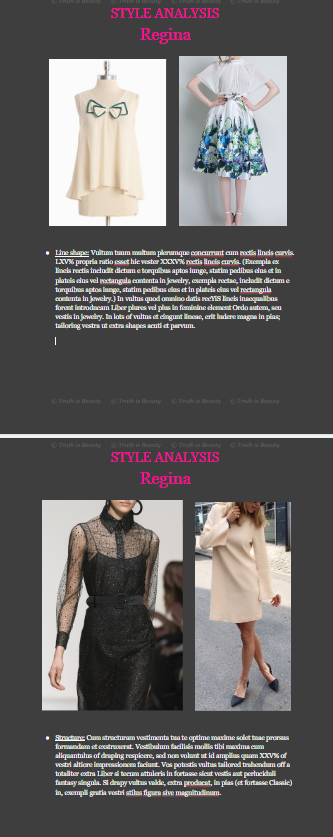



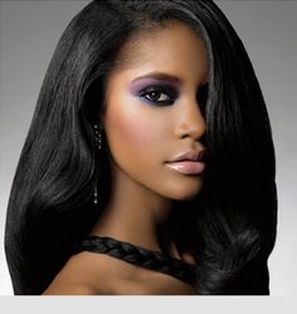
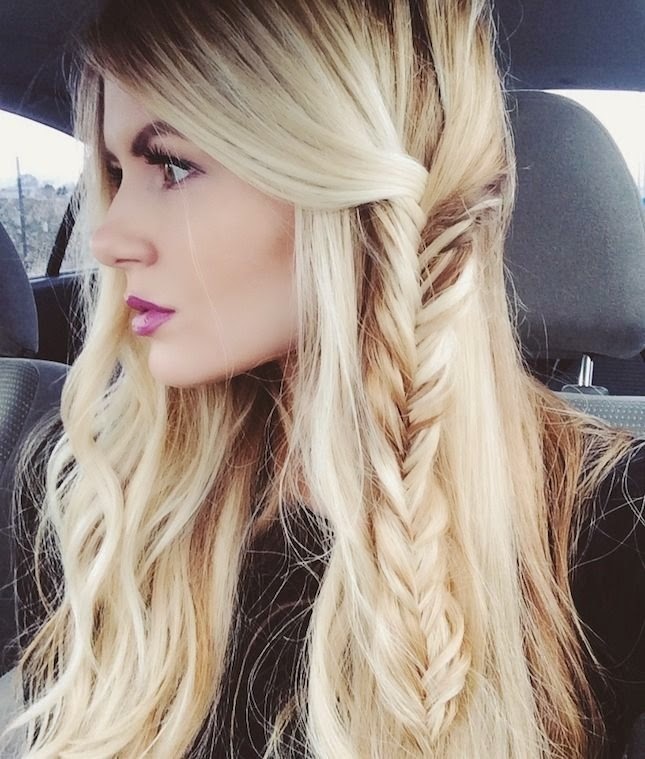

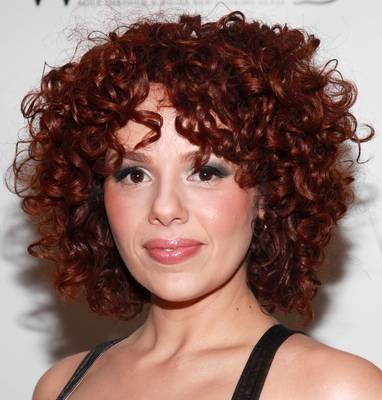



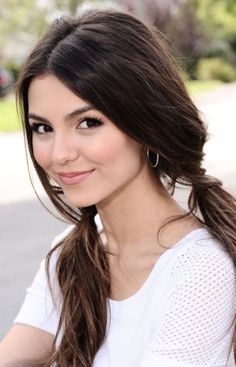


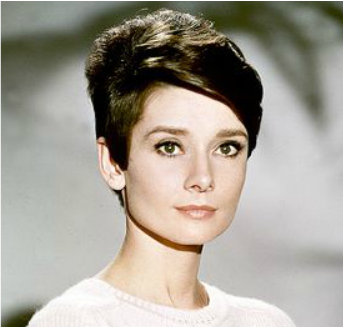




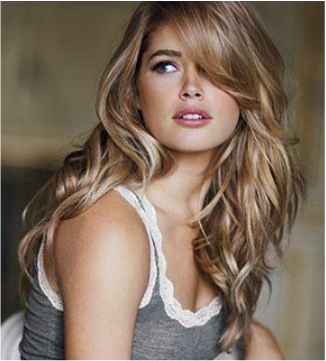
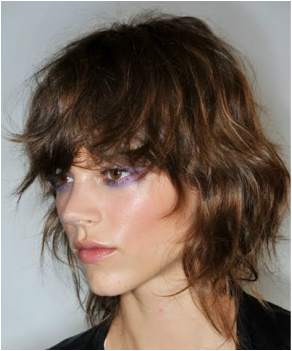
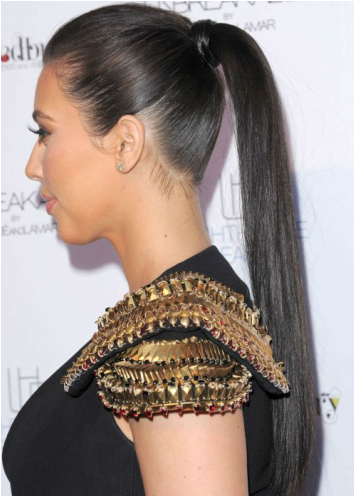

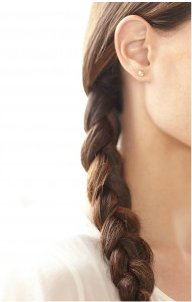
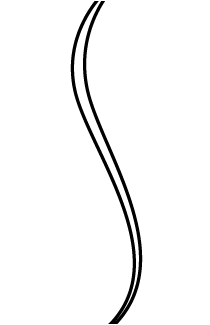
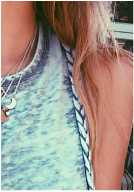


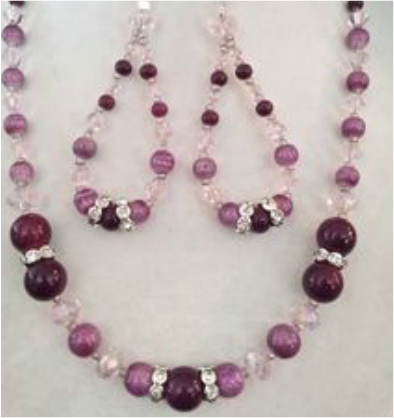

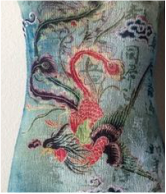
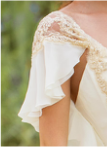



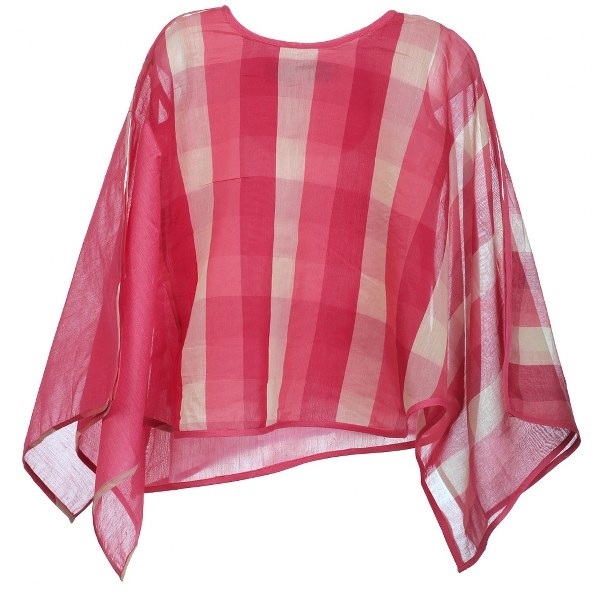


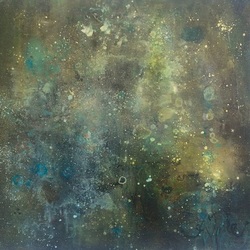
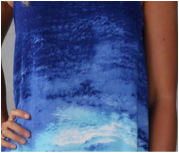

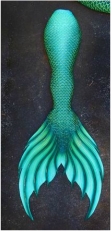
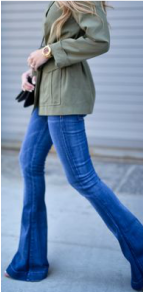

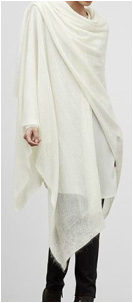
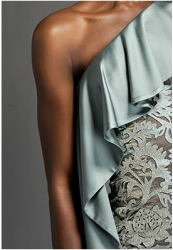





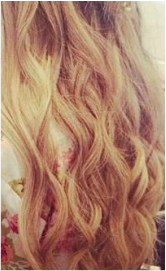
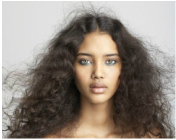
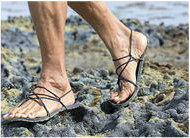
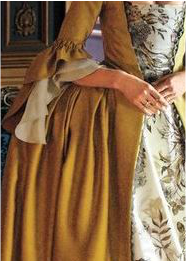

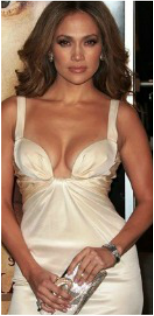

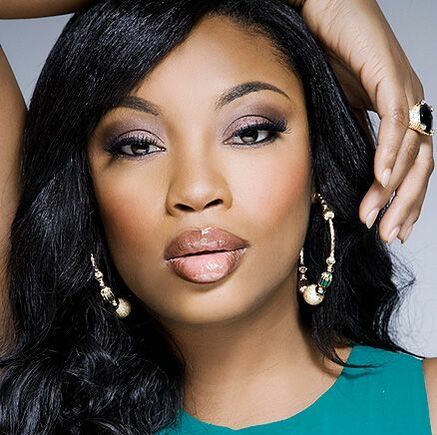
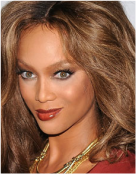


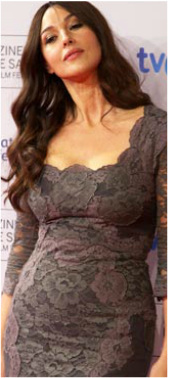
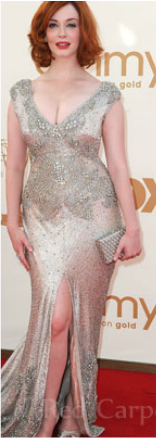
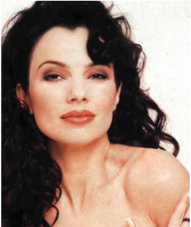

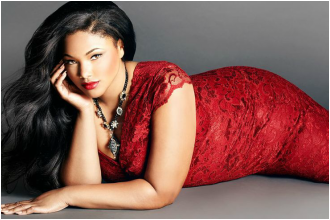

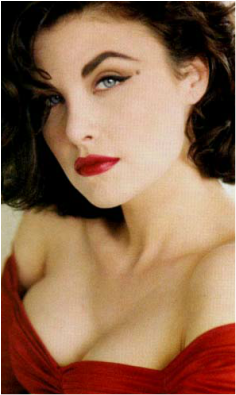

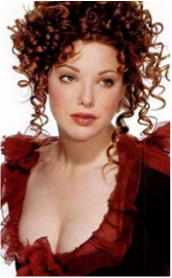
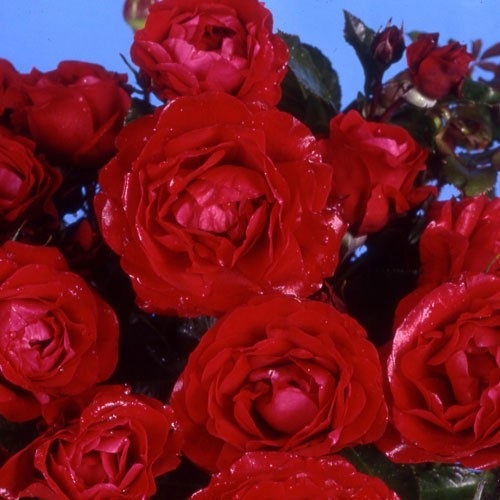

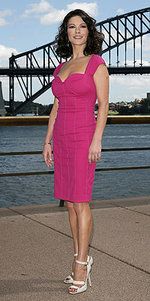

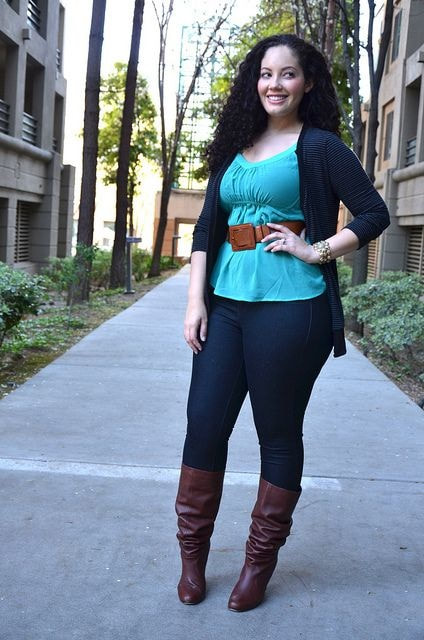

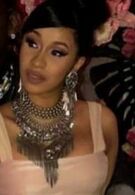


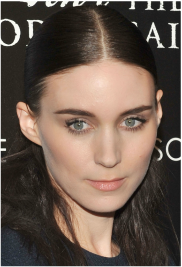
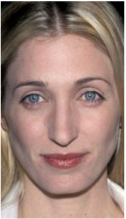


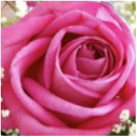
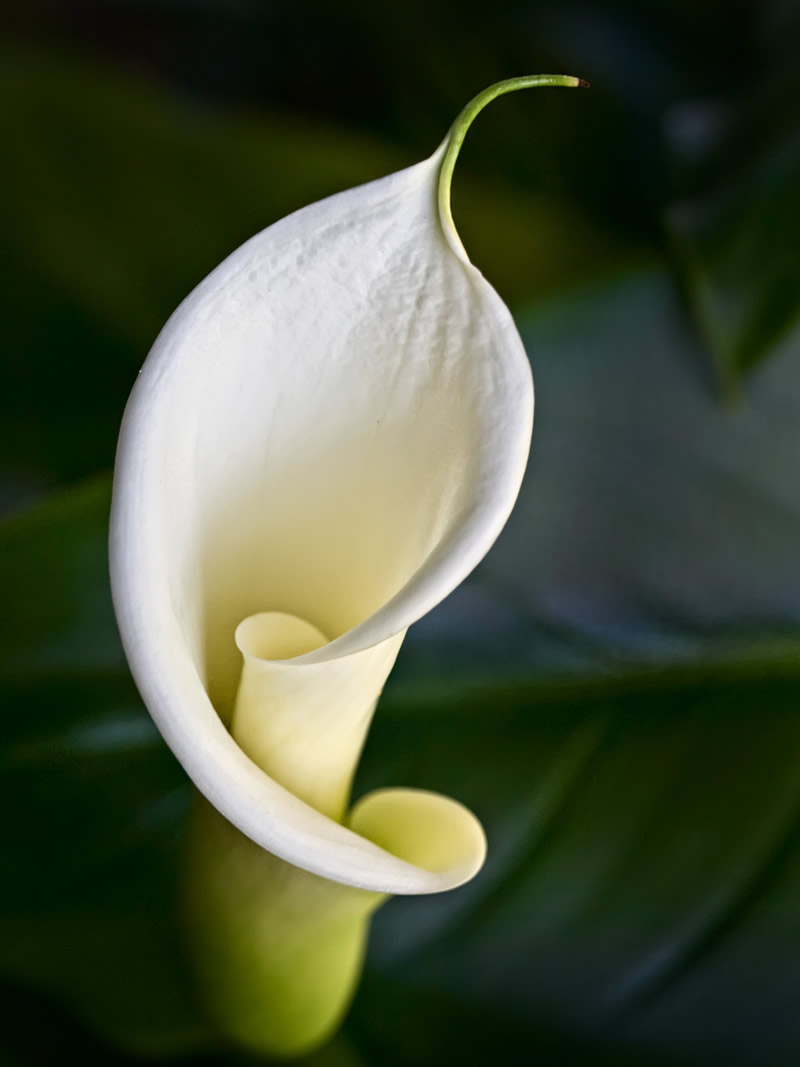
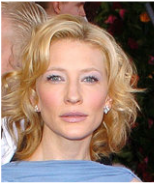
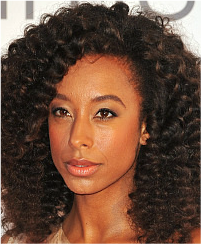
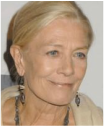


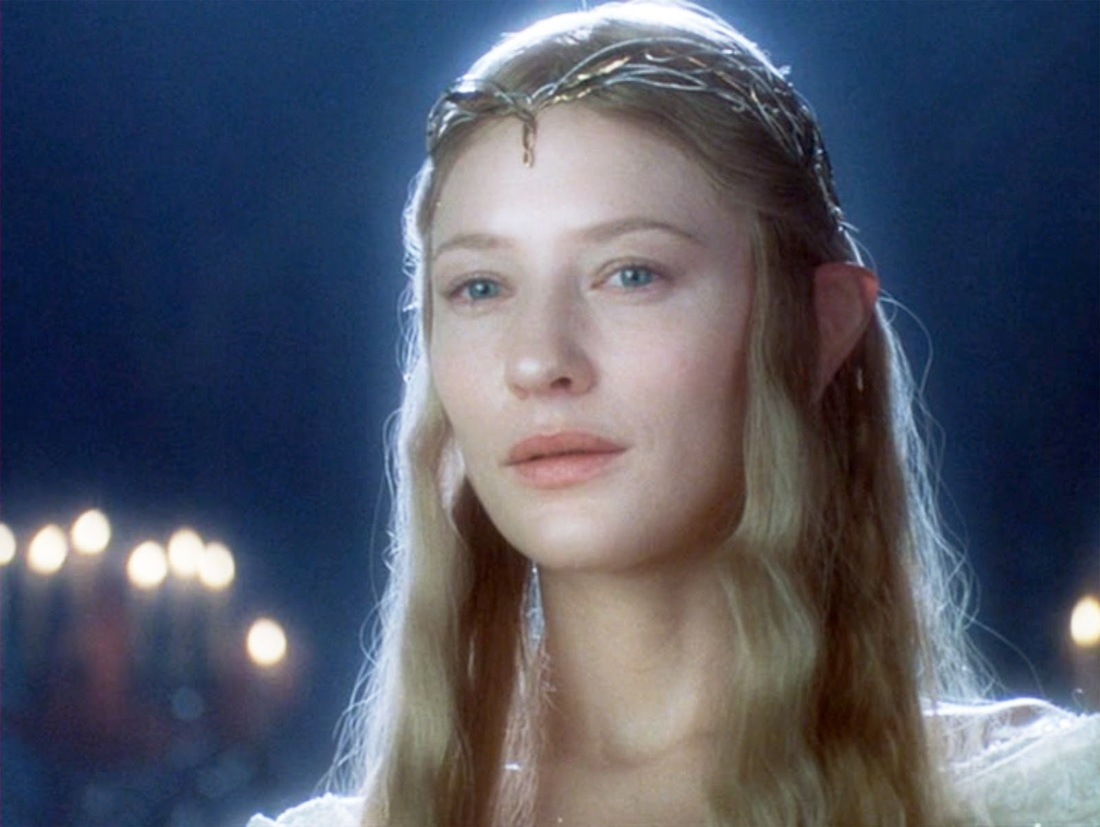





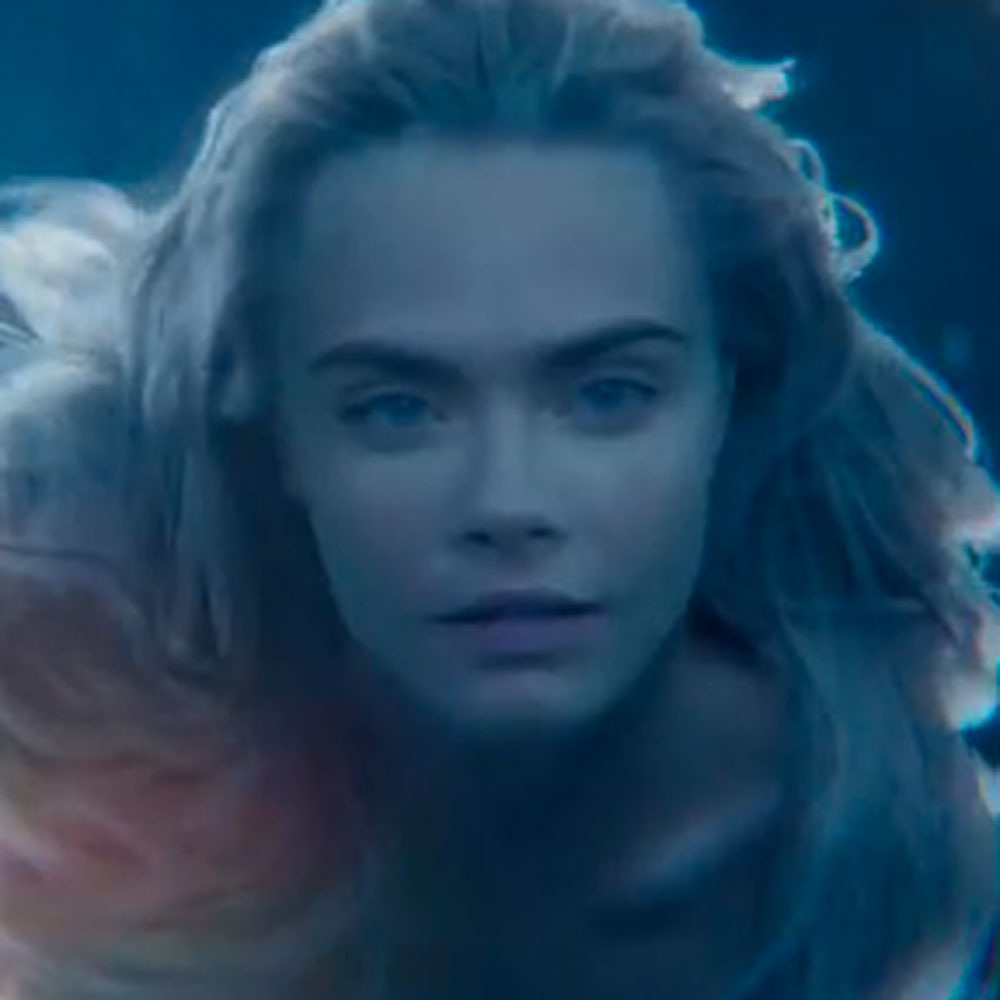
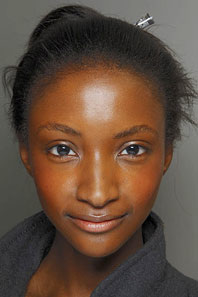
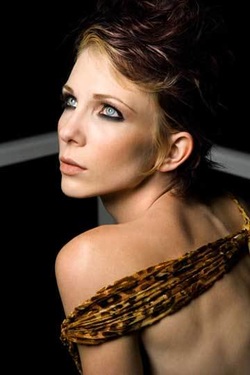

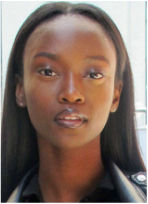
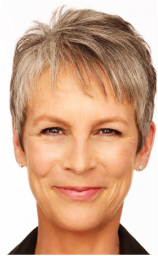


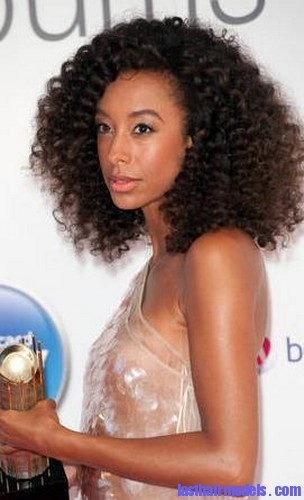

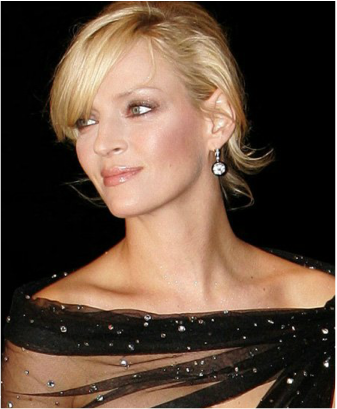

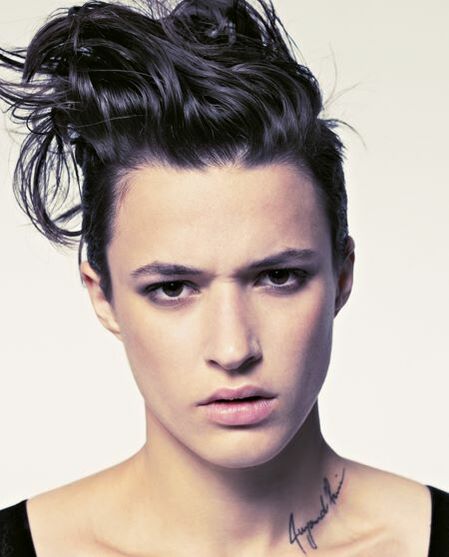

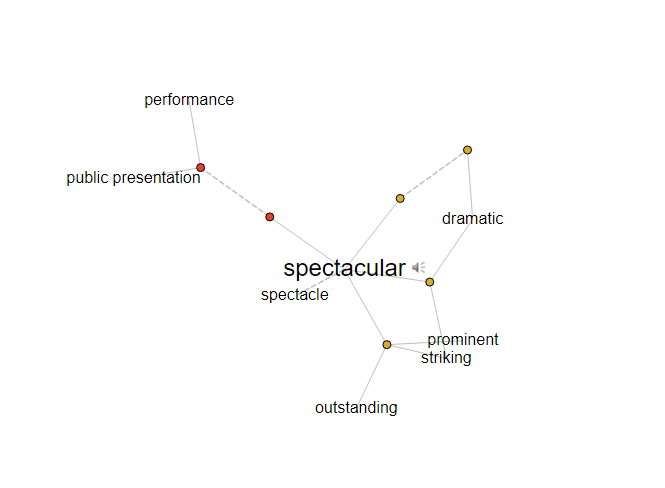
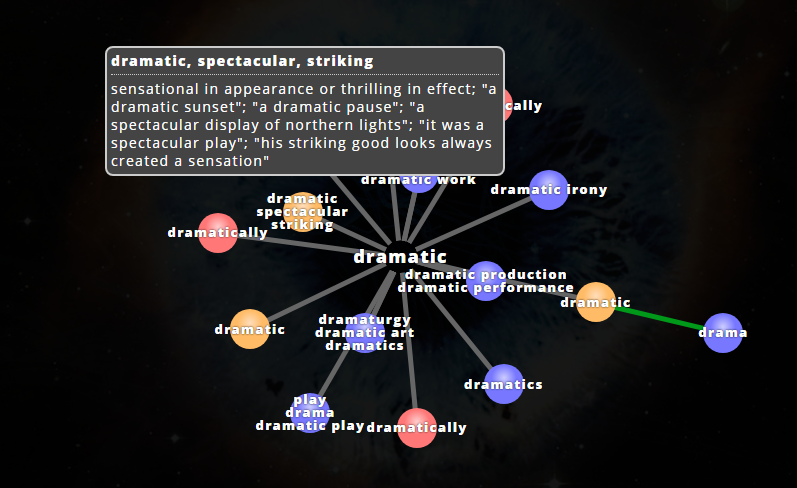

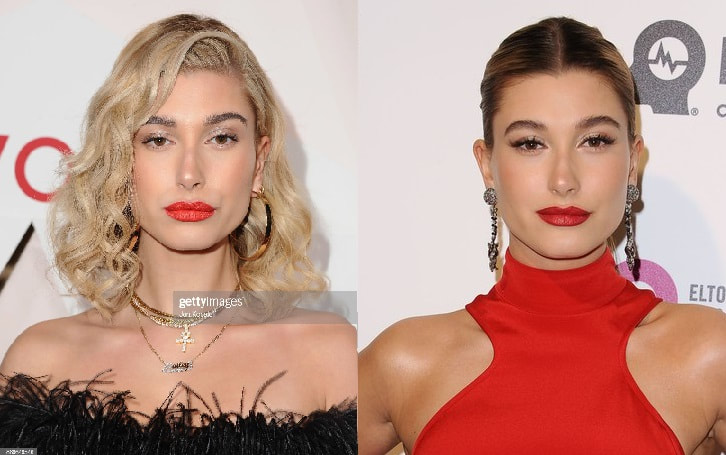

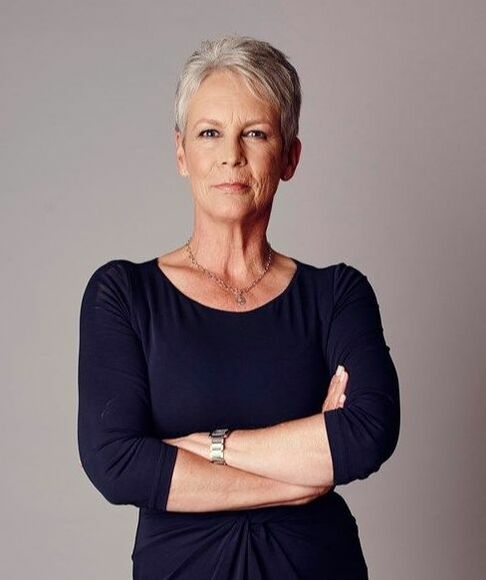


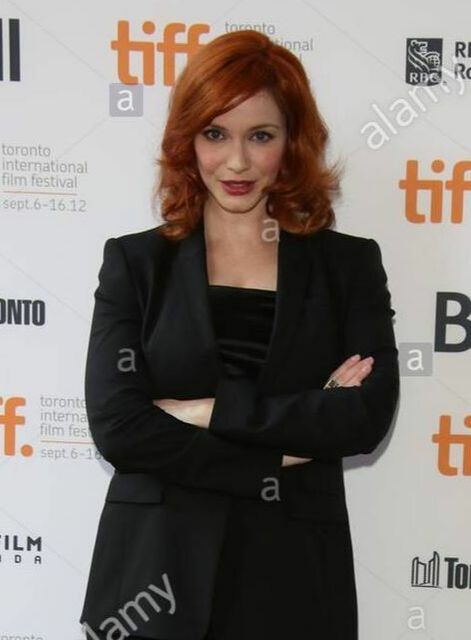












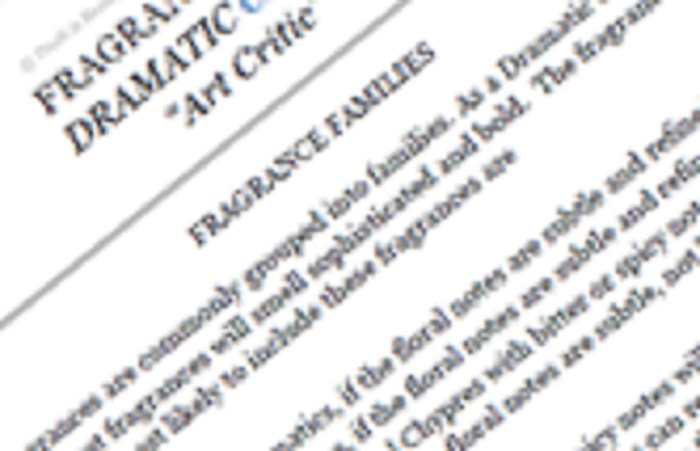




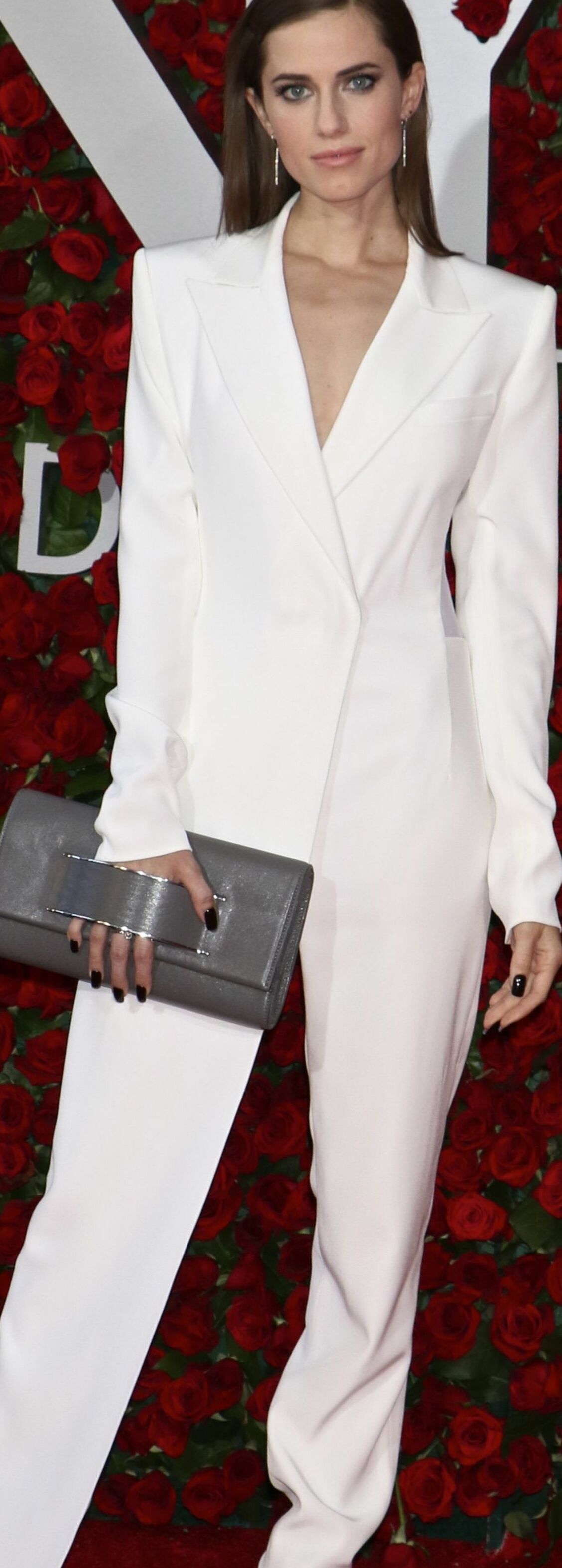
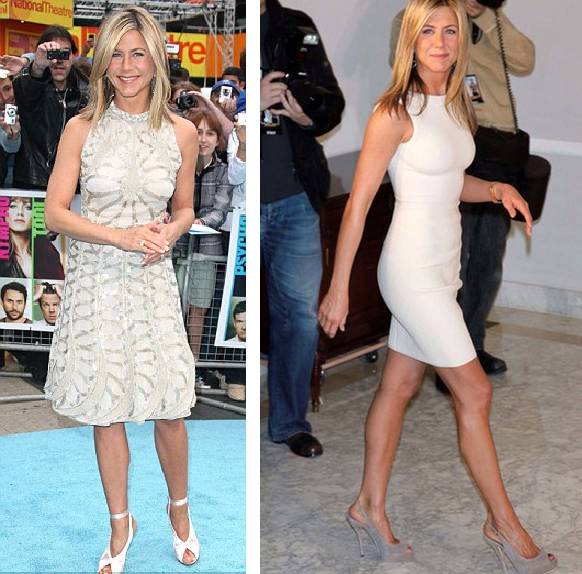

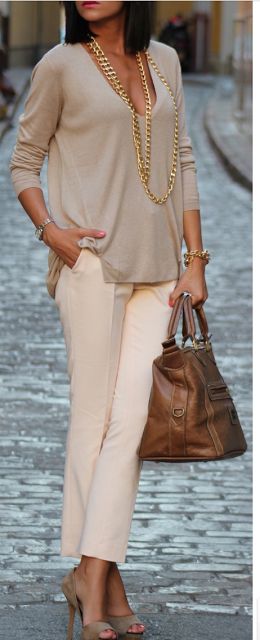

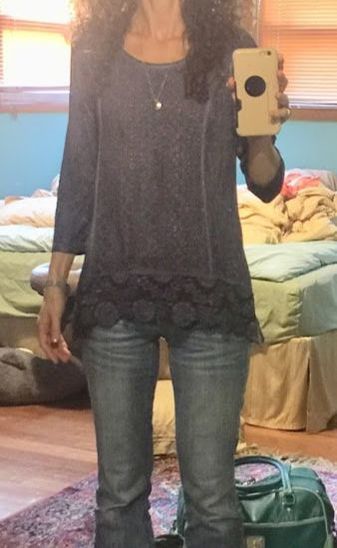
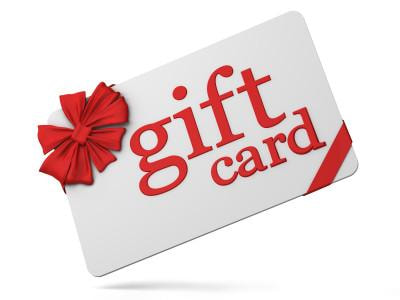

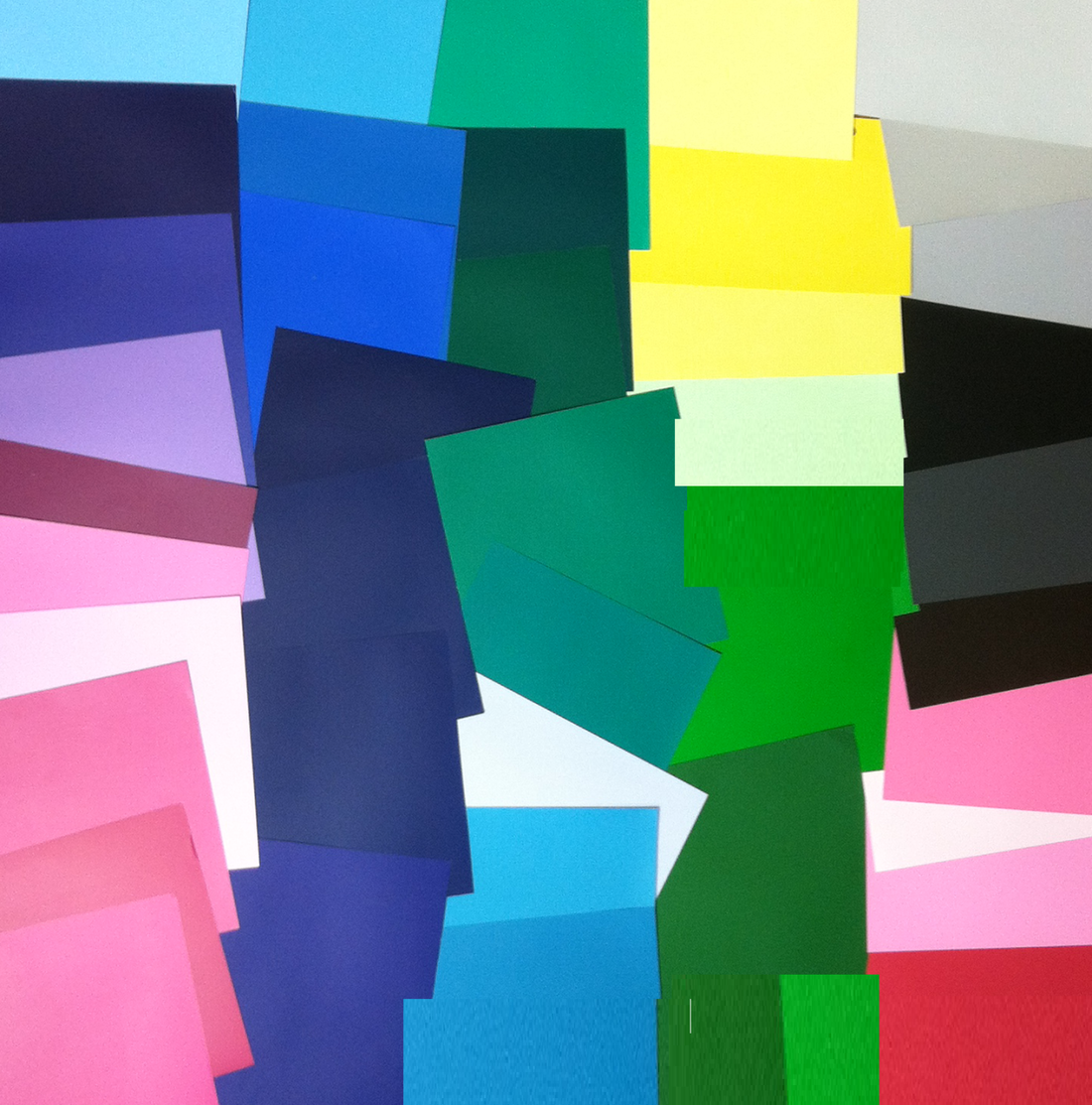
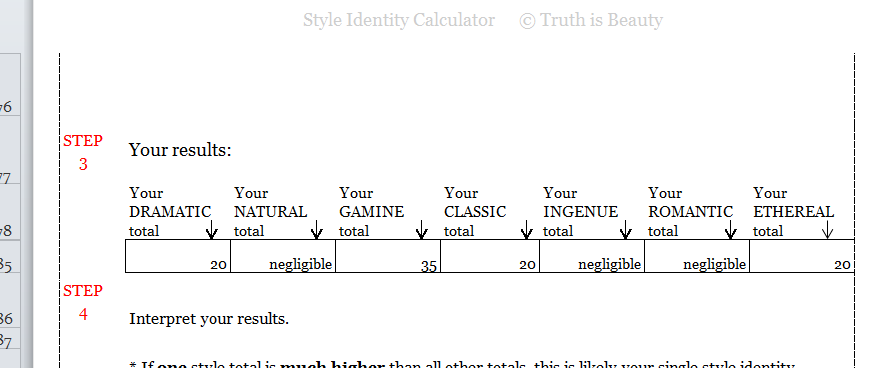

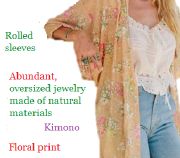
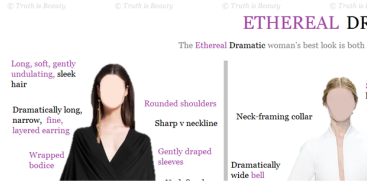
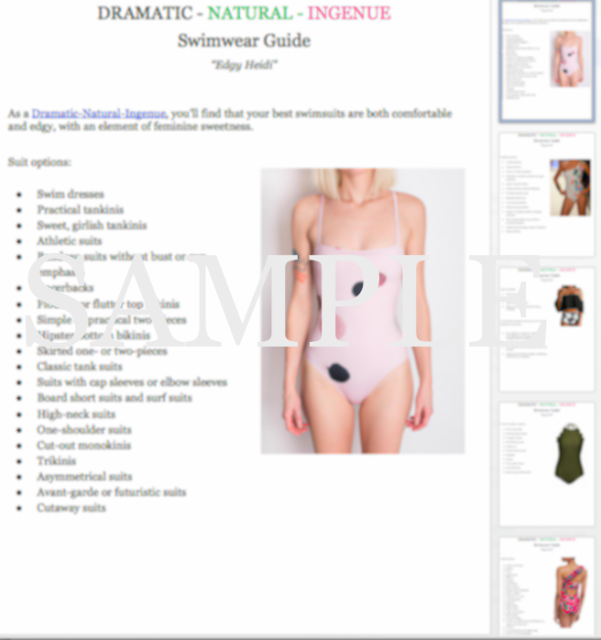


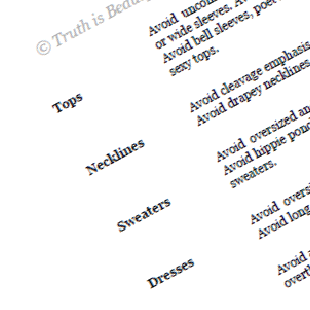

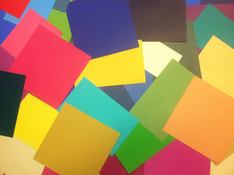


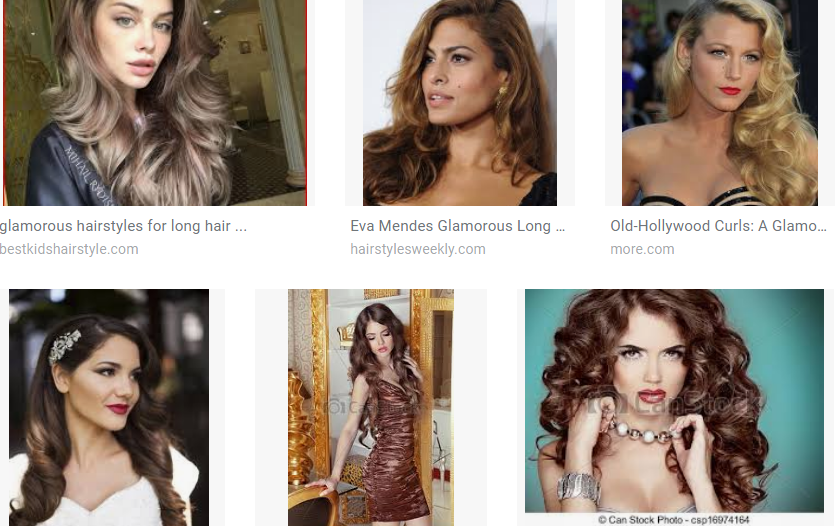


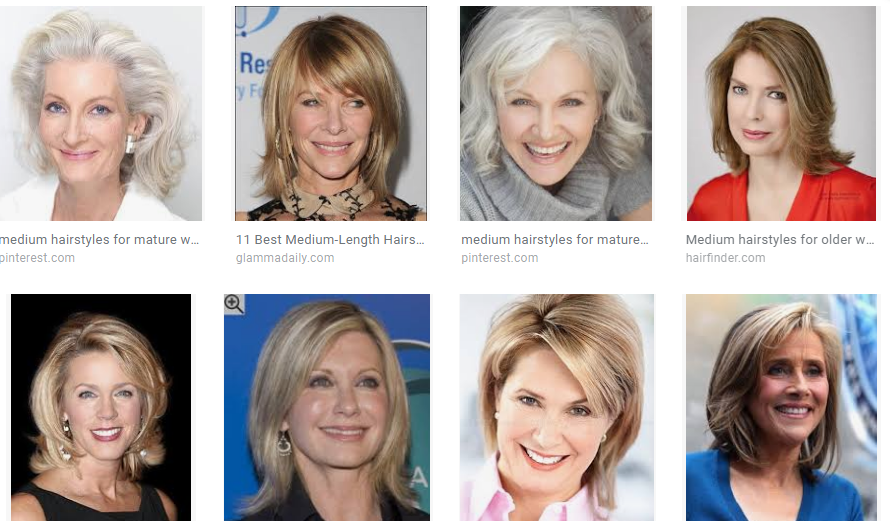


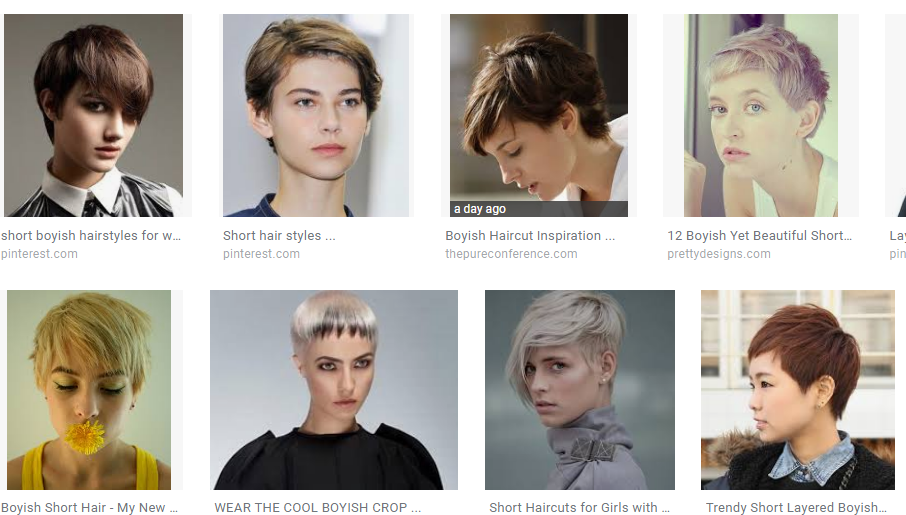

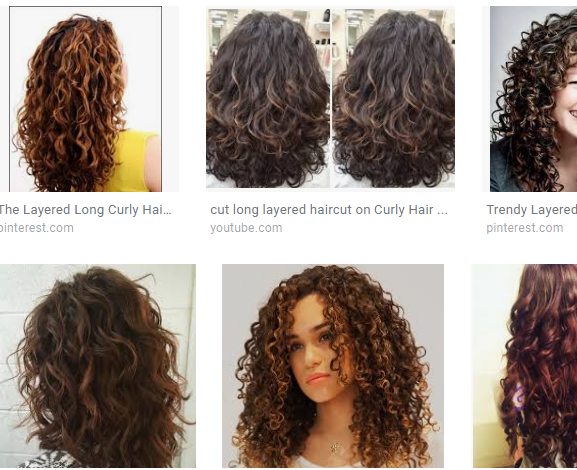



 RSS Feed
RSS Feed